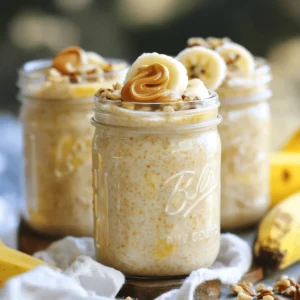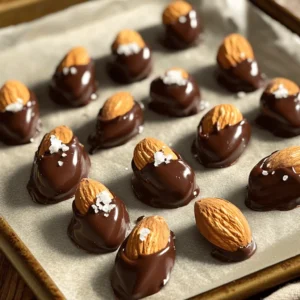- Honey Garlic Shrimp and Broccoli Quick Flavor Explosion
- No-Bake Chocolate Eclair Cake Delicious and Easy Dessert
- Gordon Ramsay’s Pan-Seared Scallops Delicious Recipe
- Huli Huli Chicken Delight Fresh and Flavorful Recipe
- Skinny Shrimp Scampi with Zucchini Noodles Delight
- Grilled Chicken Bites with Garlic Sauce Delightful Recipe
- Sticky Honey Chicken Flavorful Quick Recipe for Dinner
- Coconut Rice Pudding Disney Copycat Delightful Recipe
- Super Easy Crab Pasta Salad Fresh and Flavorful Meal
- Creamy Banana Dessert Simple and Delicious Treat
- Crab Stuffed Cheddar Bay Biscuit Savory Delight Recipe
- No-Bake Orange Creamsicle Cheesecake Delight Recipe
- Crack Chicken Baked Ziti Flavor-Packed Comfort Dish
- Grilled Shrimp Bowl with Garlic Sauce Flavor Boost
- Chicken Taco Casserole Delightful Easy Weeknight Meal
- Sweet Cornbread Delight With Simple Baking Tips
- Strawberry Cheesecake Sweet Rolls Delightful Treat
- Dwarven Feast Hearty Stew for Cozy Gatherings
- Easy Cream Cheese Chicken Enchiladas Tasty and Quick Recipe
- Vegan Chocolate Avocado Pudding Indulgent Dessert
- Sweet Potato Black Bean Enchiladas Flavorful Feast
- Crispy Air Fryer Chicken Wings Your Next Favorite Dish
- Garlic Butter Shrimp Pasta Flavorful and Easy Recipe
- Gluten-Free Blueberry Muffins Simple and Tasty Snack
- Coconut Curry Lentil Soup Rich and Flavorful Meal
- Mouthwatering Teriyaki Chicken Bowls Easy and Delicious
- Instant Pot Chicken Tikka Masala Simple and Tasty Dish
- Chocolate Chip Cookie Dough Bites Tasty and Fun Snack
- Berry Smoothie Popsicles Delightful and Healthy Treat
- Herbed Lemon Grilled Chicken Juicy and Flavorful Dish
- Cauliflower Fried Rice Tasty Low-Carb Meal Idea
- Caprese Salad Skewers Fresh and Flavorful Appetizer
- Mango Salsa with Avocado Fresh and Flavorful Recipe
- Cheesy Cauliflower Bake Delightful and Easy Recipe
- Mushroom Risotto Creamy and Flavorful Delight
- Sweet and Spicy Roasted Chickpeas Crunchy Snack Treat
- Crispy Veggie Spring Rolls Easy Homemade Delight
- Homemade Granola Bars Simple and Healthy Snack
- Caramel Apple Dip with Cream Cheese Delight
- Peanut Butter Banana Overnight Oats Easy and Tasty Delight
- Chocolate-Dipped Almonds Scrumptious and Easy Snack
- S'mores Brownie Bars Irresistible and Easy Treat


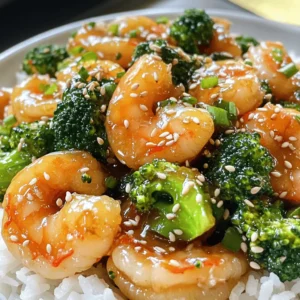
![To create a No-Bake Chocolate Eclair Cake, you need simple ingredients. Here’s what you'll need: - 1 box (14 oz) Graham crackers - 2 packages (3.4 oz each) instant vanilla pudding mix - 4 cups cold milk - 1 container (8 oz) whipped topping (like Cool Whip) - 1 cup powdered sugar - 1/2 cup unsweetened cocoa powder - 1/2 cup unsalted butter, softened - 1 tablespoon vanilla extract - A pinch of salt These ingredients work together to create a creamy, rich dessert. The Graham crackers form a crunchy base, while the pudding mix adds a lovely vanilla flavor. The whipped topping gives it a light, fluffy texture. The cocoa powder and butter come together to make a chocolate layer that is so delicious. Make sure your butter is softened for easy mixing. This cake can impress your friends and family without the need for baking. For the full recipe, check the details provided earlier. - Whisking the Pudding Mix and Cold Milk Start by taking a large mixing bowl. Add two packages of instant vanilla pudding mix and four cups of cold milk. Whisk them together until they blend well. Let the mixture sit for 2-3 minutes. This allows it to thicken, which is key to a creamy texture. - Folding in the Whipped Topping Next, take an 8 oz container of whipped topping. Gently fold it into the pudding mixture. Use a spatula to ensure it's smooth and creamy. This step makes the cake light and fluffy. - Making the Chocolate Frosting In another bowl, beat together half a cup of softened unsalted butter, one cup of powdered sugar, and half a cup of unsweetened cocoa powder. Add one tablespoon of vanilla extract and a pinch of salt. Mix until fluffy. This frosting gives a rich chocolate flavor. - Layering the Graham Crackers and Pudding Now, line the bottom of a 9x13 inch pan with a layer of Graham crackers. Spread half of the vanilla pudding mixture evenly over the crackers. Use a spatula to smooth it out. Add another layer of Graham crackers on top. Repeat this with the remaining pudding mix and finish with a final layer of crackers. - Final Assembly and Refrigeration Spread the chocolate frosting over the top layer of Graham crackers. Make sure it covers the surface well. Cover the cake with plastic wrap and place it in the fridge. Let it chill for at least 4-6 hours, or overnight if you can. This waiting time helps the layers soften and blend together perfectly. For a detailed guide, check the Full Recipe. Enjoy creating this delightful dessert! Allowing the Cake to Chill Chilling is key for this cake. It helps the layers soften and blend. I recommend letting it sit for at least 4 to 6 hours. Overnight is best! The longer it chills, the better the taste and texture. Using Fresh Ingredients Always use fresh ingredients. Fresh milk and whipped topping make a big difference. They enhance the flavor and texture, making each bite light and fluffy. Trust me, it’s worth it! Serving Suggestions When serving, cut the cake into squares. Use a sharp knife for clean edges. You can top each piece with whipped cream or chocolate shavings for a nice touch. A decorative platter also makes it look fancy! Not Allowing Enough Time to Set One common mistake is not allowing enough time for the cake to set. If you cut it too soon, the layers may not hold. This can ruin the overall look and taste. Always be patient! Overmixing Ingredients Overmixing can lead to a dense texture. When you mix the pudding and whipped topping, do it gently. You want to keep it light and airy. This ensures a creamy and smooth filling that’s just perfect! For more insights, check out the [Full Recipe]. {{image_2}} Adding different flavors can make your No-Bake Chocolate Eclair Cake even better. - Adding Fruit Layers: You can layer in some fresh fruit. Strawberries or bananas work well. These fruits add sweetness and a nice texture. Place thin slices on top of the vanilla pudding before adding the next layer of Graham crackers. - Using Different Pudding Flavors: Instant pudding comes in many flavors. Try chocolate, butterscotch, or even banana. Each flavor gives a unique twist to the cake. Mixing flavors can add depth and excitement to each bite. - Incorporating Nuts or Other Mix-Ins: Chopped nuts like pecans or walnuts can add crunch. You can also mix in chocolate chips or toffee bits for extra sweetness. Just fold them into the pudding mix before layering. You can easily modify the cake for different diets. - Gluten-Free Alternative: Use gluten-free Graham crackers instead of regular ones. This way, everyone can enjoy this tasty treat without worry. Check labels to ensure that all ingredients are gluten-free. - Dairy-Free Options: You can swap the milk and whipped topping for dairy-free versions. Use almond milk or coconut milk for the pudding. There are also great dairy-free whipped toppings available. Just make sure to choose dairy-free pudding mixes as well. These changes can make the No-Bake Chocolate Eclair Cake fit your needs while keeping it delicious. You can find the Full Recipe to try these variations. To keep your No-Bake Chocolate Eclair Cake fresh, refrigerate it right away. Place the cake in an airtight container or cover it tightly with plastic wrap. This helps avoid any odors from the fridge. How Long It Lasts In the fridge, your cake can last up to 4-5 days. The flavors meld and improve as it sits. Just remember to check for any signs of spoilage before serving. How to Freeze Layers If you want to freeze this cake, it’s best to freeze the layers separately. Wrap each layer of Graham crackers and pudding tightly in plastic wrap. Then, place them in a freezer-safe bag or container. This keeps the texture nice when you thaw. Thawing Tips for Optimal Texture To thaw, move the layers to the fridge the night before you want to eat them. This helps maintain the cake's creamy texture. Avoid thawing at room temperature, as it can make the layers soggy. Enjoy as a sweet treat when you’re ready! No-Bake Chocolate Eclair Cake lasts about 3 to 5 days in the fridge. It keeps well, thanks to the layers of Graham crackers and pudding. The longer it sits, the softer it becomes, which many people love. To enjoy it at its best, eat it within the first couple of days. Yes, you can use homemade whipped cream! It adds a fresh taste. Just whip heavy cream until it forms soft peaks. Then, fold it into the pudding mixture gently. This will make your cake even more delightful. Homemade whipped cream also gives a nice texture and flavor. For the best cuts, use a sharp knife. Run it under hot water and wipe it dry. This helps cut through the soft layers easily. Serve each piece on a plate, and you can add some extra whipped cream or chocolate shavings on top for a fun touch. It looks great and tastes amazing! Absolutely! Making this cake a day ahead works great. Just let it chill overnight. This gives the flavors time to blend and the layers to soften. The wait is worth it, as the cake becomes even more delicious. For the full recipe, check the recipe section above! This blog showed you how to make a No-Bake Chocolate Eclair Cake. We started with a simple list of ingredients and a clear step-by-step process. Tips helped you avoid common mistakes and enhance flavors. Remember to chill the cake for the best texture. You can also experiment with variations. Store leftovers properly for freshness. With these tools, you can enjoy a delicious dessert anytime. Get ready to impress your family and friends with your baking skills!](https://mysavedrecipe.com/wp-content/uploads/2025/05/7c22ca17-24c4-4c55-bf96-8c74be7f8380-300x300.webp)

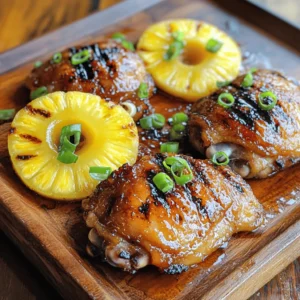
![Shrimp and Zucchini Noodles Basics For this dish, I use: - 1 pound large shrimp, peeled and deveined - 4 medium zucchinis, spiralized into noodles Zucchini noodles, or zoodles, make a great low-carb base. They soak up flavors and add a fresh crunch. The shrimp gives the dish its protein and a sweet, salty taste. Flavor Enhancers: Garlic, Lemon, and More To boost the taste, I add: - 4 cloves garlic, minced - 2 tablespoons olive oil - 1 tablespoon unsalted butter - 1 cup cherry tomatoes, halved - 1 tablespoon lemon juice - 1 teaspoon red pepper flakes (adjust to taste) Garlic and lemon create a bright, zesty flavor. The tomatoes add a juicy pop. Olive oil and butter make the dish rich and smooth. Red pepper flakes give it a nice kick. Garnishes and Seasonings To finish, I use: - Salt and pepper to taste - Fresh parsley, chopped (for garnish) - Zest of 1 lemon (for added flavor) Fresh parsley adds color and freshness. The lemon zest enhances the citrus notes. These garnishes make the dish look and taste gourmet. For the full recipe, check our detailed guide on how to prepare this delightful dish! Spiralizing Techniques To create zucchini noodles, start with fresh zucchinis. A spiralizer is the best tool for this task. It makes long, thin noodles that mimic pasta. Simply wash the zucchini, trim the ends, and twist it through the spiralizer. If you don’t have one, don’t worry! You can use a vegetable peeler to make thin strips. Just slice the zucchini lengthwise into long ribbons. Alternative Methods for Zucchini Noodles Other tools like a julienne peeler or a box grater work well too. If you want to save time, pre-spiralized zucchini is available at many stores. Keep in mind, the thinner the noodle, the quicker they cook. Tips for Perfectly Cooked Shrimp Start by heating olive oil and butter in a large skillet. Use medium heat to avoid burning. When the butter melts, add minced garlic. Sauté for just about 30 seconds. This brings out the flavor without burning it. Next, toss in the shrimp. Cook them for about 2-3 minutes. They should turn pink and opaque. This shows they are perfectly cooked. Avoiding Common Mistakes Don’t overcrowd the pan. If the shrimp are too close, they will steam instead of sear. This can make them rubbery. Also, avoid cooking shrimp for too long. Overcooked shrimp can become tough. Timing for Adding Each Ingredient After cooking the shrimp, add halved cherry tomatoes. Cook for about 2 minutes until they soften. Next, stir in the zucchini noodles. Toss them gently to combine everything. Cook for just 2-3 minutes. The noodles should be heated but still crunchy. Heat Levels Explained It's important to keep the heat at medium throughout cooking. This helps all the ingredients cook evenly without burning. If you find it's too hot, lower the heat slightly. You want a gentle simmer, not a vigorous boil. For the full recipe, check out the [Full Recipe]. - Using Less Oil or Butter To cut calories, use less oil and butter. You can swap half the butter with vegetable broth. This keeps the dish moist but cuts down on fat. - Recommended Cooking Methods Sautéing shrimp in a non-stick pan helps reduce oil use. Steaming zucchini noodles instead of sautéing can also lower calories. This keeps the noodles crunchy and fresh. - Additional Herbs and Spices You can add fresh basil or thyme to boost flavor. A pinch of smoked paprika can give a nice twist. Always taste as you go to find the right balance. - Combining with Other Vegetables Mix in bell peppers or spinach for color and taste. These veggies add nutrients and make your dish more vibrant. You can also add a handful of arugula for a peppery kick. - Pairing with Other Healthy Dishes Serve your shrimp scampi with a side salad or whole-grain bread. You could also pair it with quinoa for a complete meal. This adds fiber and keeps you feeling full. - Presentation Ideas Use a large, shallow bowl for serving. Twirl the zucchini noodles for a fun look. Top with extra parsley and lemon zest for color and freshness. This makes the dish inviting and appetizing. For the full recipe, check out the details above and enjoy making this delightful dish! {{image_2}} Gluten-Free Options This recipe is naturally gluten-free. You can enjoy it without worry. Just make sure all ingredients are gluten-free. For example, check the labels on your shrimp and any seasonings you use. Low-Carb Adjustments Zucchini noodles are a great low-carb choice. If you want fewer carbs, skip the cherry tomatoes. They add some sugar. You can also use less lemon juice to cut carbs even more. Seafood Alternatives If you don’t like shrimp, try scallops or chicken. Both cook well in this dish. Just adjust the cooking time. Scallops need about 3-4 minutes, while chicken takes a bit longer. Vegetable Variations You can swap zucchini for other veggies. Consider using spaghetti squash or yellow squash. Each offers unique flavors while still keeping it healthy. Spicy vs. Mild I love a bit of heat in my dishes. If you do too, add more red pepper flakes. For a milder version, cut back on them or leave them out. Taste it as you go to find your perfect level. Adding Unique Ingredients Get creative! Try adding capers or olives for a briny twist. You can also mix in spinach for added greens. Just remember to cook it down with the shrimp. Each new ingredient can change the whole dish. For more ideas, check the Full Recipe for Skinny Shrimp Scampi with Zucchini Noodles. For storing your Skinny Shrimp Scampi with Zucchini Noodles, follow these tips: - Refrigeration Guidelines: Store leftovers in an airtight container. They keep well in the fridge for up to three days. Make sure to cool the dish before sealing it. This helps prevent condensation and sogginess. - Freezing Recommendations: You can freeze this dish, but I recommend freezing the shrimp and zucchini noodles separately. This way, they maintain better texture. Use freezer-safe bags or containers, and they can last up to three months. Reheating is easy if you follow a few steps: - Best Methods for Reheating: The best way to reheat is in a skillet over low heat. This keeps the shrimp tender and the zucchini noodles crunchy. You can also use a microwave, but do it in short bursts to avoid overcooking. - Preserving Flavor and Texture: Add a splash of olive oil or a bit of broth when reheating. This helps keep the dish moist and flavorful. Stir gently to avoid breaking the noodles. Knowing when to enjoy your dish is key: - Duration for Safe Consumption: If stored correctly, eat the dish within three days when refrigerated. For frozen portions, consume within three months for best quality. - Signs of Spoilage: Look for changes in smell, color, or texture. If the shrimp smells off or the noodles feel mushy, it's best to toss it. Always trust your senses; they guide you well! Can I use frozen shrimp? Yes, you can use frozen shrimp. Just thaw them before cooking. Place the shrimp in cold water for about 15 minutes. This will help them thaw quickly. Make sure they are peeled and deveined for the best results. What can I substitute for zucchini noodles? If you don't have zucchini, try using spaghetti squash or carrots. You can also use whole wheat pasta for a more traditional dish. Each option adds its own flavor and texture. Calorie count per serving Each serving of Skinny Shrimp Scampi with Zucchini Noodles has about 300 calories. This makes it a light yet filling meal option. Protein and nutrient breakdown This dish provides around 25 grams of protein per serving. It also has healthy fats from olive oil and butter. The zucchini adds fiber and vitamins, making it nutritious. What is the best way to avoid overcooking shrimp? Cook shrimp for only 2-3 minutes per side. They should turn pink and opaque. Remove them from heat as soon as they change color. This keeps them tender and juicy. How can I make this dish more flavorful? Add more garlic or lemon zest for extra taste. Fresh herbs like basil or thyme also enhance flavor. You can adjust red pepper flakes for spice. These tips help create a rich, delicious meal. This blog post detailed how to make a healthy shrimp and zucchini noodle dish. We covered ingredients, cooking steps, and storage tips. Remember, using fresh flavors like garlic and lemon makes a difference. Avoid overcooking shrimp for the best taste. You can also adjust the recipe to fit different diets. I hope these ideas inspire you to enjoy a tasty, healthy meal with ease. Try experimenting and have fun with your cooking!](https://mysavedrecipe.com/wp-content/uploads/2025/05/7b4b3630-b8d0-4f6c-ab6e-4fd87f177afa-300x300.webp)
![- Chicken and Marinade Ingredients - 1.5 lbs boneless, skinless chicken breasts, cut into bite-sized pieces - 4 tablespoons olive oil - 3 garlic cloves, minced - 1 teaspoon smoked paprika - 1 teaspoon onion powder - 1 teaspoon dried oregano - Salt and pepper to taste - Skewers (soaked in water for 30 minutes if wooden) - Ingredients for Garlic Sauce - 1/4 cup Greek yogurt - 1 tablespoon mayonnaise - 2 tablespoons lemon juice - 2 teaspoons fresh parsley, chopped - 1 garlic clove, minced - Salt and pepper to taste - Optional Garnishes - Lemon wedges - Fresh parsley for a pop of color When I start this recipe, I love the simple yet bold flavors. The chicken needs to soak up the marinade for great taste. The olive oil adds richness, while garlic gives it a nice kick. The spices bring warmth and depth. For the garlic sauce, I mix yogurt and mayo for creaminess. The lemon juice brightens it up. Fresh parsley adds a nice touch. This sauce is so good; it pairs perfectly with the chicken bites. I often add lemon wedges as a garnish. They look pretty and add extra zest. Fresh parsley also makes the dish pop. It’s all about making the meal look as good as it tastes. This recipe is great for gatherings or a fun family dinner. You can find the full recipe above for more details. Enjoy the delicious flavors and easy prep! How to Prepare the Marinade To make the marinade, mix together 4 tablespoons of olive oil, 3 minced garlic cloves, 1 teaspoon of smoked paprika, 1 teaspoon of onion powder, and 1 teaspoon of dried oregano. Add salt and pepper to taste. This mix gives the chicken a deep flavor. Proper Marinade Time Let the chicken marinate for at least 30 minutes. If you can wait longer, up to 2 hours is even better. This time helps the flavors soak into the chicken. Tips for Chicken Preparation Cut the chicken into bite-sized pieces. This allows for even cooking and makes it easy to eat. Make sure the pieces are similar in size for best results. Ingredients and Mixing Method For the garlic sauce, you need 1/4 cup of Greek yogurt, 1 tablespoon of mayonnaise, 2 tablespoons of lemon juice, 2 teaspoons of chopped fresh parsley, and 1 minced garlic clove. Mix these together in a bowl until smooth. Flavor Enhancements for the Sauce You can add a pinch of salt and pepper to taste. If you want a kick, try adding a bit of cayenne pepper. This adds heat without overpowering the garlic flavor. Prepping the Grill Preheat your grill to medium-high heat. This helps get nice grill marks on the chicken. If you use wooden skewers, soak them in water for 30 minutes to prevent burning. Skewering Techniques Take the marinated chicken pieces and thread them onto the skewers. Leave a small space between each piece to allow heat to circulate. This helps them cook evenly. Cooking Time and Temperature Place the skewers on the grill and cook for about 10-12 minutes. Turn them occasionally to get that perfect char. The chicken is done when it reaches an internal temperature of 165°F. Follow these steps for tasty grilled chicken bites with zesty garlic sauce. For the complete recipe, check out the [Full Recipe]. How to Achieve Perfect Grill Marks To get those perfect grill marks, preheat your grill to medium-high. This heat helps sear the chicken. Place the chicken on the grill and do not move it for about three minutes. Then, turn it 90 degrees to create crosshatch marks. After another three minutes, flip the chicken pieces. This method gives you great grill marks. Avoiding Dry Chicken To keep your chicken juicy, marinate it for at least 30 minutes. The olive oil in the marinade helps lock in moisture. Also, do not overcook the chicken. Use a meat thermometer to check its internal temp. Aim for 165°F. This ensures juicy bites every time. Creamy vs. Lighter Versions You can make the garlic sauce creamy or lighter. For a creamy version, add more Greek yogurt and a touch of mayonnaise. If you want a lighter sauce, skip the mayo. Use more lemon juice for brightness. Both options taste great with the chicken. Adding More Flavor to the Sauce To boost the sauce flavor, mix in fresh herbs like dill or chives. You can also add a dash of hot sauce for heat. Another option is to sprinkle in some grated Parmesan cheese. Each twist makes the sauce special. Best Side Dishes to Pair Grilled chicken bites pair well with fresh salads or roasted veggies. Try a simple green salad with lemon vinaigrette. For a hearty option, serve with rice or quinoa. These sides balance the flavors of the chicken and garlic sauce. Plating Ideas for Presentation For a pretty plate, arrange the skewers on a large platter. Garnish with lemon wedges and sprigs of parsley. Serve the garlic sauce in a small bowl at the center. This setup looks inviting and makes dipping easy. If you're interested in making this dish, check out the Full Recipe for complete details. {{image_2}} You can substitute chicken with other proteins. For example, turkey works well. Shrimp is also a delicious option. Both add unique flavors to your dish. If you want to try something new, consider tofu. It absorbs flavors well and is a great meat alternative. You can also cook these proteins in different ways. If you don't have a grill, use a skillet on the stove. Pan-searing gives a nice crust, too. Broiling in the oven works great for quick cooking. To spice up your grilled chicken bites, add heat. Consider mixing in some cayenne pepper or chili flakes. This will give an exciting kick to your dish. You can also play with herbs. Instead of oregano, try basil or thyme. Fresh herbs add a vibrant touch. Mix in cilantro for a fresh twist. Each herb brings a new flavor to your bites. Making these grilled chicken bites ahead of time is easy. Marinate the chicken and store it in the fridge for up to 24 hours. This saves time on busy days. If you have leftovers, freezing them is a smart choice. Place the bites in an airtight container. They can stay fresh for about three months. When you're ready to eat, reheat them in the oven. This method keeps them juicy. Enjoy your grilled chicken bites any time with these meal prep ideas! To keep your grilled chicken bites fresh, use airtight containers. Glass or plastic containers work well. Store the chicken bites in the fridge. They stay good for up to three days. Always let the chicken cool down before sealing it. When you're ready to eat the leftovers, use the oven or a skillet. Both methods heat the chicken evenly. If you use the oven, set it to 350°F. Bake for 10-15 minutes. If using a skillet, add a splash of water. This keeps the chicken moist and prevents dryness. You can freeze grilled chicken bites for later. First, let them cool completely. Then, place them in freezer-safe bags. Squeeze out the air and seal tightly. They can stay in the freezer for up to three months. To thaw, leave them in the fridge overnight. Reheat as needed. Enjoy your grilled chicken bites anytime! For the full recipe, check out the details above. The ideal marination duration for chicken is at least 30 minutes. This time lets the chicken soak in all those great flavors. If you can, marinate for up to 2 hours. The longer you marinate, the more flavor your chicken will have. Just don't go overboard; too long can make the chicken mushy. Yes, you can use frozen chicken for this recipe. Start by thawing the chicken in the fridge overnight. If you need it fast, you can use the microwave. Once thawed, cut it into bite-sized pieces. Then, follow the marinade steps from the Full Recipe. Grilled chicken bites are great with many side dishes. Some popular choices are: - Rice or quinoa - Grilled veggies like zucchini and bell peppers - Fresh salads with mixed greens - Garlic bread for extra flavor Absolutely! This recipe is perfect for meal prep. You can marinate and grill the chicken ahead of time. Store the bites in an airtight container in the fridge. They last well for up to four days. Just reheat and serve during the week for easy, tasty meals. This blog post covered how to make delicious grilled chicken bites. You learned about ingredients, marinating, making garlic sauce, and grilling tips. I shared ideas for variations and meal prep. Proper storage and reheating methods ensure leftovers stay tasty. In summary, these tips will help you create flavorful meals. Enjoy grilling and experimenting with new flavors! You’ll impress everyone at your next gathering.](https://mysavedrecipe.com/wp-content/uploads/2025/05/d8addaa2-5fad-4e88-8f16-e8351ff7fde0-300x300.webp)
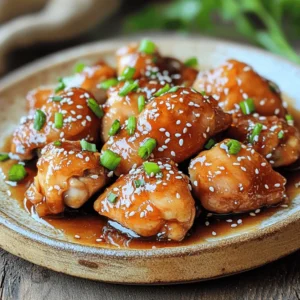
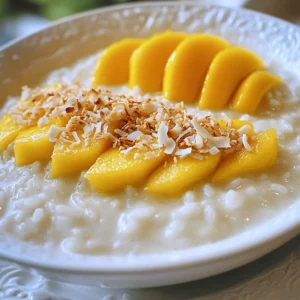
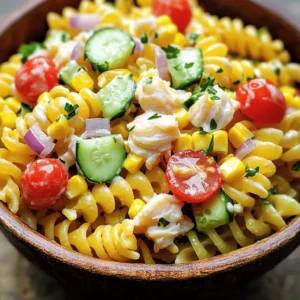
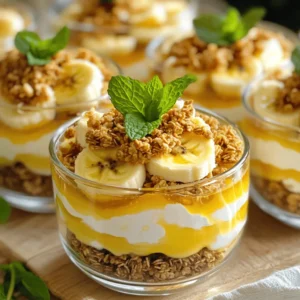

![- 1.5 cups graham cracker crumbs - 1/2 cup unsalted butter, melted - 2 cups cream cheese, softened - 1 cup powdered sugar - 1 cup heavy whipping cream - 1/2 cup orange juice (freshly squeezed if possible) - Zest of 1 orange - 1 teaspoon vanilla extract - Pinch of salt - Orange slices and whipped cream for garnish To make this no-bake orange creamsicle cheesecake, you need simple and fresh ingredients. Start with graham cracker crumbs for the crust. The melted butter will help bind the crumbs together. Next, cream cheese is key for a smooth and creamy filling. Use softened cream cheese for the best texture. Powdered sugar adds sweetness, while heavy whipping cream gives it a light and fluffy feel. The orange juice and zest create that delicious orange flavor we love. Make sure to use fresh orange juice if you can. It makes a big difference! Vanilla extract adds more depth to the taste, and a pinch of salt balances it all out. For the finishing touch, we garnish with orange slices and whipped cream. This adds a pop of color and flavor. With these ingredients, you’re ready to create a delightful dessert that is not only easy to make but also a hit at any gathering. For the complete recipe, check out the [Full Recipe]. - Combine 1.5 cups of graham cracker crumbs and 1/2 cup of melted unsalted butter in a bowl. - Mix until the crumbs are well coated with butter. - Press the crust mixture evenly into the bottom of a springform pan. - Chill the crust in the refrigerator for 15 minutes. - In a large bowl, beat 2 cups of softened cream cheese and 1 cup of powdered sugar until smooth. - Add 1/2 cup of orange juice, the zest of 1 orange, 1 teaspoon of vanilla extract, and a pinch of salt. Mix until well combined. - In a separate bowl, whip 1 cup of heavy cream until stiff peaks form. - Gently fold the whipped cream into the cheesecake filling until mixed. - Pour the cheesecake filling into the chilled crust and smooth the top with a spatula. - Cover and refrigerate for at least 4 hours, or overnight for best results. This no-bake orange creamsicle cheesecake will impress everyone at your table. For the full recipe, you can refer to the earlier section. To get the best texture, start with room temperature cream cheese. Cold cream cheese will make lumps in your filling. It’s also important to avoid overmixing. Mix just until smooth. Overmixing can add too much air, making the cheesecake too fluffy. For a beautiful look, garnish your cheesecake with fresh orange slices and a dollop of whipped cream. These toppings not only add color but also enhance the flavor. You can also sprinkle a bit of extra orange zest on top for a bright touch. Chocolate shavings or crushed nuts can also be fun additions. If your cheesecake is too soft, it may need more time in the fridge. Try leaving it overnight to set properly. To slice the cheesecake cleanly, use a hot knife. Dip the knife in hot water, then wipe it dry before cutting. This helps create smooth edges for each slice. {{image_2}} You can play with flavors in this recipe. Try using lemon or lime juice instead of orange juice. This gives a bright twist. You can also add some zest from these fruits for extra taste. Want a chocolate touch? Add chocolate chips on top or mix cocoa into the filling. Fresh berries like strawberries or blueberries also work well. They add color and a fruity kick. If you want a different base, consider an Oreo crust. Just crush Oreos and mix with melted butter. You can also use almond flour for a low-carb option. For a gluten-free crust, almond flour does the job nicely. Just mix it with some melted butter, and press it into the pan. This cheesecake pairs well with drinks. Serve it with iced tea or a refreshing lemon soda. For side dishes, consider a light salad with citrus dressing. This balances the sweetness of the cheesecake. Perfect occasions to serve this dessert include birthday parties or summer picnics. It delights everyone and adds a fun touch to any event. For the complete recipe, check out the Full Recipe section. To keep your No-Bake Orange Creamsicle Cheesecake fresh, store leftovers in the refrigerator. Place it in an airtight container or cover it tightly with plastic wrap. This prevents air from drying it out. If you want to freeze the cheesecake, slice it first. Wrap each slice in plastic wrap and then in aluminum foil. This method keeps the cheesecake safe and delicious for later. Your cheesecake will last about 4 to 5 days in the fridge. After that, it may start to lose flavor and texture. Signs that indicate the cheesecake has spoiled include a sour smell or mold growth. If you notice any of these signs, it’s best to discard the cheesecake. Always trust your senses and err on the side of caution. For the full recipe, check the detailed instructions in the previous sections. Yes, you can use store-bought crust for this recipe. It saves time and effort. A pre-made crust is great if you want a quick dessert. Just make sure it fits your pan size. Homemade crust provides a fresh taste. It allows you to control sweetness and texture. If you have time, I recommend making it yourself for the best flavor. To check if your cheesecake is set, gently shake the pan. If the center jiggles slightly, it's ready. It should feel firm but not hard. You can also insert a toothpick into the filling. If it comes out clean, it’s done. A properly set cheesecake needs time in the fridge. Chill for at least four hours or overnight for best results. Yes, you can use other cheeses if you want. Mascarpone adds a rich flavor but is softer. Ricotta works too, but it may change the texture. Goat cheese gives a tangy taste but can be strong. Remember to blend well for smoothness. Each cheese brings a unique taste to your cheesecake. Experiment to find your favorite combination. For the best results, stick to cream cheese as the base. In this post, I shared how to make a delicious orange cheesecake. You learned about the key ingredients, the steps for the crust and filling, and tips for a perfect texture. I also covered storage methods and answers to common questions. Remember, the right ingredients make a great dessert. Feel free to explore the variations and get creative with flavors and toppings. Enjoy every bite of your cheesecake masterpiece!](https://mysavedrecipe.com/wp-content/uploads/2025/05/a5bedd46-ae33-4632-86b6-a7cdbf1cbb23-300x300.webp)

![To make a tasty grilled shrimp bowl, gather these ingredients: - 1 pound large shrimp, peeled and deveined - 2 tablespoons olive oil - 2 cloves garlic, minced - 1 teaspoon red pepper flakes - Juice of 1 lime - Salt and pepper to taste - 1 cup cooked quinoa - 1 cup cherry tomatoes, halved - 1 avocado, sliced - 1 cup mixed greens (spinach, arugula, or your choice) - Fresh cilantro for garnish Fresh ingredients make a big difference in flavor. They add brightness and life to your dish. Fresh shrimp taste sweeter and more tender. Fresh herbs, like cilantro, bring a pop of flavor. When you use fresh tomatoes, they burst with juiciness. Always choose the best quality you can find for the best results. You can easily swap ingredients to meet your needs. If you're gluten-free, quinoa is a great base. For a low-carb option, try cauliflower rice instead. If you're vegan, replace shrimp with grilled tofu or chickpeas. For dairy-free, skip the avocado or use a nut-based sauce. These simple swaps keep the dish tasty and fun for everyone. Start by gathering your ingredients. You need olive oil, minced garlic, red pepper flakes, lime juice, salt, and pepper. In a bowl, mix the olive oil with the minced garlic. Add the red pepper flakes, lime juice, salt, and pepper. Whisk it all together until combined. This mix will pack a punch. It adds flavor to the shrimp while they cook. Next, take your shrimp. Add them to the bowl with the garlic marinade. Toss the shrimp well so they coat evenly. Let them sit for about 15 to 20 minutes. This time lets the flavors soak in. Don’t skip this step; marinating makes a big difference! Preheat your grill or grill pan to medium-high heat. If using wooden skewers, soak them in water for 30 minutes. This helps them not burn. Thread the marinated shrimp onto the skewers. Grill the shrimp for 2 to 3 minutes on each side. You want them to turn pink and opaque. Once done, remove the shrimp from the grill. Now it’s time to build your bowl. Start with cooked quinoa as the base. Add a layer of mixed greens on top. Next, place the grilled shrimp on the greens. Toss in halved cherry tomatoes and avocado slices. For more flavor, drizzle any leftover garlic marinade over the bowl. Finally, garnish with fresh cilantro. This will make your dish pop! For the complete recipe, refer to the [Full Recipe]. Grilling shrimp is simple but needs care. First, choose large shrimp. They hold up better on the grill. Rinse them well and peel off the shells. Next, marinate the shrimp for at least 15 minutes. This helps them soak up the flavor. When you grill, use medium-high heat. This cooks the shrimp quickly. For even cooking, place shrimp in a single layer. Do not crowd the grill. Keep an eye on them; they cook fast, about 2-3 minutes per side. If you use skewers, soak wooden ones for 30 minutes. This keeps them from burning. You can also use metal skewers, which don’t need soaking. To boost flavor, consider adding more spices. Fresh herbs like parsley or basil can add nice touches. Try citrus zest too. Lime or lemon zest brightens the dish. You can also add veggies to the skewers. Bell peppers, zucchini, or onions work well. They grill nicely and add color. Another great idea is to drizzle extra garlic sauce on top. This adds depth to the dish. For a kick, add some sriracha or hot sauce to your marinade. Just a dash can make a big difference. A well-presented dish makes a big impact. Use colorful bowls to serve the shrimp. Bright greens and reds make the dish pop. Layer ingredients in the bowl. Start with quinoa, then greens, and top with shrimp. Add halved cherry tomatoes and avocado slices for a fresh look. Finally, garnish with fresh cilantro. This adds a nice touch and enhances the flavor. A squeeze of lime juice on top adds brightness. For the full recipe, see above. Enjoy your beautiful creation! {{image_2}} If you want a vegetarian version of the grilled shrimp bowl, try using grilled tofu or tempeh. Both options soak up flavors well. You can marinate them in the same garlic sauce as the shrimp. Another great choice is grilled portobello mushrooms. They have a rich taste and meaty texture. Just slice them thick, marinate them, and grill until tender. To make the garlic sauce spicier, add more red pepper flakes or a dash of hot sauce. You can also blend in some chopped jalapeños for extra heat. If you want a smoky flavor, add a pinch of smoked paprika to the sauce. This gives the dish a nice kick without overpowering the garlic. Different regions add unique flavors to this bowl. For a Mediterranean twist, try adding olives, feta cheese, and a squeeze of lemon. If you want a taste of Asia, mix in soy sauce and sesame oil. You could also toss in some pickled ginger for a tangy touch. This recipe allows you to explore various flavors while keeping it fresh and fun. For more ideas, check out the Full Recipe. To store your leftover grilled shrimp bowl, let it cool first. Place it in an airtight container. You can keep it in the fridge for up to three days. To keep the shrimp fresh, store it separately from the quinoa and veggies. This helps maintain the texture and flavor of each part. When you're ready to enjoy leftovers, reheat them gently. The best method is to use the stove. Warm the shrimp in a pan over low heat for about 2-3 minutes. Stir often to avoid overcooking. You can also use a microwave. Heat in 30-second bursts until warm, but be careful not to dry them out. The shelf life of your ingredients varies. Fresh shrimp lasts one to two days in the fridge. Cooked quinoa can keep for about five days when stored properly. Cherry tomatoes stay fresh for about a week. Avocados can brown quickly, so use them within a day or two after cutting. Always check for freshness before using any stored ingredients. For the full recipe, visit the recipe section. To boost shrimp flavor, use a good marinade. A mix of olive oil, garlic, and spices works wonders. I often add lime juice for brightness. Marinate for at least 15 minutes. The longer you marinate, the better the taste. Fresh herbs like cilantro also add zing. Yes, you can use frozen shrimp. Just thaw them first. Place shrimp in cold water for about 15 minutes. Pat them dry before marinating. This step keeps them from being watery. Frozen shrimp can taste just as good as fresh when cooked well. If you want a swap for quinoa, try brown rice or farro. Both add great texture. You can also use couscous for a lighter feel. If you're looking for a low-carb option, cauliflower rice works too. Each choice brings its own flavor and can make your bowl unique. Yes, this recipe is perfect for meal prep. You can cook the shrimp and quinoa ahead of time. Store them in airtight containers in the fridge. Just assemble your bowls when you're ready to eat. This keeps everything fresh and tasty. You’ll enjoy healthy meals all week long! For the Full Recipe, check the earlier sections. This article covered how to make a tasty grilled shrimp bowl. We talked about fresh ingredients and alternatives for different diets. I shared tips for marinating and grilling, plus how to present your dish. We also explored fun variations and smart storage tips. In summary, grilling shrimp is easy and delicious. You can make it your own by adding spices or different veggies. Enjoy experimenting with flavors and creating your perfect bowl!](https://mysavedrecipe.com/wp-content/uploads/2025/05/9fd360c3-257c-4574-b09e-5946c190d211-300x300.webp)
![The Chicken Taco Casserole is a fun dish that packs a lot of flavor. Here is what you need: - 2 cups cooked shredded chicken - 1 can black beans, rinsed and drained - 1 can corn, drained - 1 cup salsa (mild or spicy, based on preference) - 1 teaspoon taco seasoning - 2 cups tortilla chips, lightly crushed - 1 cup shredded cheddar cheese - 1 cup sour cream - 1/2 cup green onions, sliced - Fresh cilantro, for garnish Gather these ingredients before you start. The combination of chicken, beans, and corn makes this dish hearty. The salsa adds zest, and the taco seasoning brings it all together. The tortilla chips give a nice crunch, while the cheese melts beautifully. Don't forget the sour cream and green onions for serving! Fresh cilantro brightens the dish and adds a pop of color. For the full recipe, check out the details above. 1. Preheat the oven: Set your oven to 350°F (175°C). This will ensure even cooking. 2. Combine ingredients in a mixing bowl: In a large bowl, mix the cooked shredded chicken, black beans, corn, salsa, and taco seasoning. Stir until everything is well blended. 3. Layer the casserole ingredients: Grease a 9x13 inch baking dish. Spread half of the crushed tortilla chips on the bottom. Next, add half of the chicken mixture on top of the chips. Sprinkle half of the shredded cheddar cheese over this layer. Repeat the process with the remaining chips, chicken mixture, and cheese. 4. Bake the casserole: Place the baking dish in the oven and cover it with aluminum foil. Bake for 20 minutes. 1. Cover with aluminum foil: Make sure the foil is tight around the edges. This helps steam the casserole, keeping it moist. 2. Remove foil for browning: After 20 minutes, take off the foil. Bake for another 10 minutes. This allows the cheese to melt and turn golden brown. 1. Cool before serving: Let the casserole sit for a few minutes once out of the oven. This helps it set and makes serving easier. 2. Garnish options: Top each serving with sour cream, green onions, and fresh cilantro. This adds flavor and makes it look great. For the full recipe, check out the complete instructions above. Enjoy your Chicken Taco Casserole! - Best types of salsa to use: Choose a salsa you love. A mild or spicy salsa works great. I like using fresh salsa for its bold taste. Jarred salsa is fine too. Just pick what you enjoy! - How to avoid soggy chips: To keep your chips crisp, layer them carefully. Place them on the bottom first, but don’t drown them in sauce. Using less salsa can help too. This way, you get that nice crunch! - Plating suggestions: For a beautiful plate, scoop out portions with a spatula. Make sure each serving has layers of chicken and cheese. Serve it on colorful plates for a fun touch! - Garnishing options: Top your casserole with a dollop of sour cream. Add sliced green onions for color. A sprinkle of fresh cilantro adds flavor and looks great! - Meal prep suggestions: You can prepare the chicken and chop veggies a day ahead. This cuts down your cooking time on busy nights. Just mix everything when you’re ready to bake! - Using rotisserie chicken: Grab a rotisserie chicken from the store for quick prep. It's already cooked and shredded. This saves time and adds great flavor to your casserole. {{image_2}} You can easily change the chicken in the casserole. Try using ground beef or turkey instead. This swap gives a different taste while keeping it hearty. For a vegetarian option, use beans and plenty of veggies. Chopped peppers or zucchini add great texture and flavor. To enhance the flavor, add extra spices or herbs. A pinch of cumin or paprika can make a huge difference. You can also try fresh cilantro for a bright kick. When it comes to cheese, feel free to mix it up. Monterey Jack or pepper jack can add a fun twist. Get creative with how you serve this casserole. You can dish it up in bowls or on plates. A taco bar setup lets everyone customize their meal. Set out toppings like salsa, jalapeños, and avocado for fun. This way, everyone can make their own perfect plate. For the full recipe, visit the [Full Recipe] section. To store leftovers, place the casserole in an airtight container. Make sure it cools first. The shelf life in the fridge is about three to four days. Always check for any signs of spoilage before eating. For best results, freeze the casserole before baking. Wrap it tightly in plastic wrap and then foil. This helps prevent freezer burn. You can keep it frozen for up to three months. When ready to eat, thaw it overnight in the fridge. To reheat, bake it directly from the fridge. You can reheat in the oven or microwave. For the oven, cover it with foil to keep it moist. Bake at 350°F (175°C) for about 20 minutes. If using the microwave, heat in short bursts to avoid drying it out. Stir it occasionally to maintain texture. Can I make Chicken Taco Casserole ahead of time? Yes, you can prepare it a day early. Just follow the recipe up to the baking step. Cover the dish tightly and store it in the fridge. When you're ready to eat, bake it straight from the fridge, adding a few extra minutes to the cooking time. What can I substitute for sour cream? You can use Greek yogurt as a great swap. It has a similar tangy flavor and adds creaminess. Cream cheese or cottage cheese also work well, but adjust to your taste. How to adjust the spice level? To lower the spice, choose mild salsa and avoid adding hot spices. For more heat, add jalapeños or spicy salsa. You can also sprinkle some chili powder in the mix for an extra kick. Can I use canned chicken instead of cooked? Yes, canned chicken is a quick option. Drain and rinse it well before mixing with the other ingredients. It saves time but may have a different texture compared to fresh chicken. How long does it take to bake? Baking takes about 30 minutes total. First, cover the dish with foil for 20 minutes. Then, remove the foil for the last 10 minutes to let the cheese brown nicely. What are some side dishes to serve with it? Serve it with a fresh salad or some rice. Guacamole and salsa on the side add flavor. You can also try some tortilla chips or a light corn salad for a nice crunch. For the full recipe, check out the details above. This Chicken Taco Casserole blends easy ingredients into a tasty meal. You prepare it with layers of flavor and texture, from chicken to melted cheese. I shared tips on serving, storage, and variations to keep it fresh. Experimenting with different ingredients can make this dish your own. Whether you stick to the recipe or try alternatives, you'll enjoy a delicious meal. Make it, share it, and savor it with family and friends!](https://mysavedrecipe.com/wp-content/uploads/2025/05/10d22ba0-85d1-40ed-afb6-1b5938e4db4f-300x300.webp)
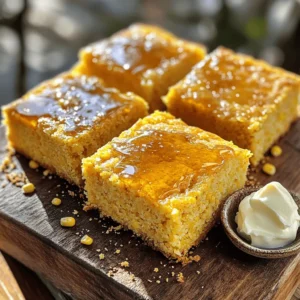

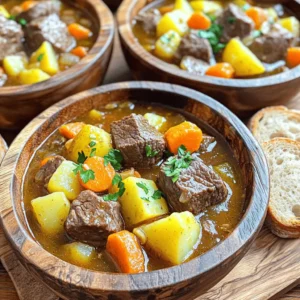
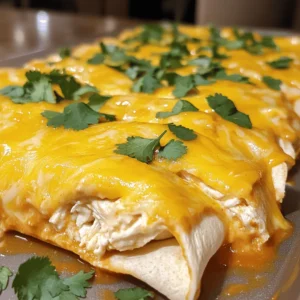
![To make this rich and creamy dessert, gather these ingredients: - 2 ripe avocados, pitted and peeled - 1/2 cup unsweetened cocoa powder - 1/2 cup maple syrup (or agave syrup) - 1/4 cup almond milk (or any plant-based milk) - 1 teaspoon vanilla extract - Pinch of salt - 1/4 cup melted dark chocolate (dairy-free) - Fresh berries and mint leaves for garnish (optional) Each ingredient plays a key role in achieving the perfect texture and flavor. The avocados give creaminess, while cocoa powder gives that rich chocolate taste. When picking avocados, choose ripe ones that feel slightly soft when pressed. They should have smooth skin, free of dark spots. Quality cocoa powder truly elevates this pudding. Opt for unsweetened, high-quality cocoa for the best flavor. The maple syrup or agave syrup should be pure for a natural sweetness. If you can, use organic almond milk. It adds a nice touch to the pudding. You can easily swap some ingredients if needed. For example, if you don’t have maple syrup, agave syrup works great. You can also use any plant-based milk you prefer, like soy or oat milk. If you want a nut-free option, try coconut milk. For added flavor, you can use vanilla bean paste instead of extract. If you’re not a fan of dark chocolate, try using vegan chocolate chips. These simple swaps let you customize this vegan chocolate avocado pudding to your taste. For the full recipe, check out the detailed instructions. First, gather all your ingredients. You need ripe avocados, unsweetened cocoa powder, maple syrup, almond milk, vanilla extract, salt, and melted dark chocolate. Ripe avocados are key. They should be soft to the touch. This ensures a creamy pudding. Measure your ingredients carefully. This makes blending easier and faster. Now, it’s time to blend! Start by placing the avocados in your blender or food processor. Add in the cocoa powder, maple syrup, almond milk, vanilla extract, and a pinch of salt. Blend on high speed until the mixture is smooth and creamy. If your blender struggles, pause to scrape down the sides. This helps everything blend evenly. Once smooth, slowly pour in the melted dark chocolate. Blend again until it mixes well. Taste your pudding. If you want it sweeter, add a little more maple syrup. Blend for a few more seconds to combine. Transfer your luscious pudding into serving bowls. Cover them with plastic wrap or a lid. Place them in the fridge for at least 30 minutes. This chilling time helps the pudding thicken. When ready to serve, take them out. You can garnish with fresh berries or mint leaves for a pop of color. Enjoy your vegan chocolate avocado pudding! For the complete recipe, refer to the Full Recipe section above. To get a creamy and smooth pudding, start with ripe avocados. They should feel soft but not mushy. When you blend, use a high-speed blender or food processor. This helps break down the avocados well. If the mixture is too thick, add a little more almond milk. Blend again until it’s velvety. Taste is key! After blending, try a spoonful. If it needs more sweetness, add a bit more maple syrup. Blend again for a few seconds. Keep tasting until it feels just right. You can also swap maple syrup with agave syrup if you want a different flavor. Presentation makes dessert special. For this pudding, I love using fresh berries and mint leaves. They add color and freshness. You can also sprinkle some cocoa powder on top. Try adding a few dark chocolate shavings for extra flair. For the full recipe, visit [Full Recipe]. Enjoy making your vegan chocolate avocado pudding! {{image_2}} You can add fun flavors to your pudding. Try adding a shot of espresso for a rich coffee taste. You can also mix in spices like cinnamon or cayenne for a warm kick. A dash of sea salt can highlight the chocolate flavor nicely. Each tweak can make this dessert feel new and exciting. If you want to change the sweetener, maple syrup works great, but you can use agave syrup too. For a sugar-free option, try using stevia or monk fruit sweetener. When it comes to milk, almond milk is my go-to, but oat milk or coconut milk can be used instead. Each milk will change the taste a bit, so feel free to experiment! While serving in bowls is classic, you can get creative. Try using small cups or shot glasses for a fun twist. Layer the pudding in a parfait with granola or fruits. You can also pipe it into a pie crust for a unique dessert. The options are endless, and each presentation adds to the fun of enjoying this tasty treat. For the full recipe, check out [Full Recipe]. To keep your vegan chocolate avocado pudding fresh, store it in an airtight container. This helps prevent air from entering and keeps it creamy. Make sure to cover the surface with plastic wrap if you don't have a lid. This will stop the pudding from turning brown. You don’t need to reheat this pudding. It tastes best when chilled. If you want it warm, gently heat it in a saucepan over low heat. Stir it often to avoid cooking the pudding. This pudding lasts about 3 to 5 days in the fridge. If you want to store it longer, you can freeze it. Place it in a freezer-safe container. It will stay good for up to 3 months. When you want to eat it, thaw it overnight in the fridge. Stir well after thawing to regain the creamy texture. For the best results, enjoy it fresh. You can find the full recipe to make this delightful treat anytime. To make this pudding sugar-free, swap the maple syrup with a sugar-free sweetener. Options like stevia or erythritol work well. Start with a small amount and adjust to taste. Remember, the sweetness level may vary between sweeteners. Always blend until smooth to keep the creamy texture. Yes, you can make this pudding without a blender. Use a fork or potato masher to mash the ripe avocados until smooth. Then, mix in the cocoa powder, maple syrup, and almond milk. Stir well until everything is combined. It may take a bit longer, but it can still be delicious! You can use frozen avocados, but you must thaw them first. Place them in the fridge overnight or run them under warm water. Once thawed, drain any excess water. This will help keep the pudding smooth. Then, follow the recipe as usual for a tasty treat. For the complete recipe, check the Full Recipe section! This blog post covered how to make vegan chocolate avocado pudding. We explored the best ingredients, methods for prep, and blending tips. I shared ideas for flavor and sweetener swaps. I also included storage info and FAQs for common questions. With this pudding, you can enjoy a creamy and rich dessert without guilt. Remember, experimenting with spices or different milks can bring your creation to the next level. Enjoy your journey to making the perfect vegan treat!](https://mysavedrecipe.com/wp-content/uploads/2025/05/379573ba-6bc8-44f3-b1ff-9ed019e846ed-300x300.webp)
![To make Sweet Potato Black Bean Enchiladas, gather these simple ingredients: - 2 medium sweet potatoes, peeled and diced - 1 can (15 oz) black beans, rinsed and drained - 1 cup corn kernels (fresh or frozen) - 1 teaspoon cumin - 1 teaspoon chili powder - Salt and pepper, to taste - 2 cups enchilada sauce (store-bought or homemade) - 8 small corn tortillas - 1 cup shredded cheese (cheddar or Monterey Jack) - Fresh cilantro, for garnish - 1 avocado, sliced (for topping) These enchiladas are a tasty way to enjoy healthy ingredients. Each serving offers: - Calories: 350 - Protein: 14g - Carbohydrates: 54g - Dietary Fiber: 10g - Total Fat: 12g Sweet potatoes provide vitamins A and C while black beans add protein and fiber. This dish is filling and nutritious. You can adjust this recipe to fit various diets. Here are some options: - Vegan: Omit cheese or use a vegan cheese substitute. - Gluten-Free: Use gluten-free tortillas instead of corn tortillas. - Low-Carb: Substitute sweet potatoes with zucchini or cauliflower. These changes keep the dish flavorful while meeting different dietary needs. For the full recipe, check the earlier section. First, you need to preheat your oven to 375°F (190°C). This step is key for even cooking. Next, bring a large pot of salted water to a boil. Add the diced sweet potatoes and cook them for 10-12 minutes. You want them to be fork-tender. After that, drain and set them aside. In a large bowl, combine the sweet potatoes, rinsed black beans, corn, cumin, chili powder, salt, and pepper. Mix it well so all the flavors blend together. This filling will be the heart of your enchiladas. Now, warm the corn tortillas. Use a dry skillet over medium heat. Heat them for about 30 seconds on each side. This makes them soft and easy to work with. Grab a greased 9x13-inch baking dish. Pour about 1/2 cup of enchilada sauce on the bottom. Take one tortilla and fill it with about 1/3 cup of your sweet potato mixture. Sprinkle a little cheese on top, then roll it up tightly. Place it seam-side down in the dish. Repeat this for all tortillas. Pour the remaining enchilada sauce over the rolled enchiladas. Make sure they are covered well. Then, sprinkle the rest of the cheese on top. Cover the dish with foil and bake for 20 minutes. After that, remove the foil. Bake for another 10-15 minutes until the cheese is melted and bubbly. Take the dish out of the oven and let it cool for a few minutes. Before serving, garnish with fresh cilantro and sliced avocado. Enjoy your Sweet Potato Black Bean Enchiladas, bursting with flavor! For more detailed guidance, check the Full Recipe. To make the best enchiladas, use fresh tortillas. They should be soft and warm. Heat them in a skillet for a few seconds. This makes them easy to roll. Also, don’t overfill the tortillas. About 1/3 cup of filling works well. If you pack them too tight, they can break. When cooking sweet potatoes, cut them into even pieces. This helps them cook evenly. Boil them for 10-12 minutes until fork-tender. If you prefer, you can also roast them. Just toss them with a little oil, salt, and pepper. Roast at 400°F for about 25 minutes. This adds a nice caramelized flavor. For cheese, I love using cheddar or Monterey Jack. Both melt nicely and add great taste. Feel free to mix them for more flavor. As for sauces, you can use store-bought enchilada sauce or make your own. A homemade sauce gives a fresh taste and goes well with the sweet potatoes. For a twist, add some lime juice or cilantro to the sauce. You can find the Full Recipe for more detailed steps. {{image_2}} You can add ground turkey or chicken to your enchiladas. This step adds protein and richness. Start by cooking 1 pound of ground meat in a skillet until brown. Drain the fat and mix the meat with the sweet potato filling. This makes the dish hearty and satisfying. You can also season the meat with cumin and chili powder to match the filling's flavors. To make these enchiladas vegan, swap the cheese for a plant-based option. You can use cashew cheese or nutritional yeast for a cheesy flavor. Replace the regular tortillas with corn tortillas that are dairy-free. Ensure your enchilada sauce contains no animal products. This way, you keep the deliciousness without any animal ingredients. If you like heat, add jalapeños to the mix. Chop 1-2 fresh jalapeños and stir them into the sweet potato filling. You can also sprinkle some sliced jalapeños on top before baking. This adds a nice kick and makes the dish more exciting. Adjust the amount based on your spice preference. To keep your enchiladas fresh, let them cool completely. Place leftovers in an airtight container. They will stay good in the fridge for up to four days. If you want to enjoy them later, freezing is a great option. To reheat, take the enchiladas out of the fridge. Preheat your oven to 350°F (175°C). Cover the dish with foil to keep them moist. Heat for 20-25 minutes, or until warm. You can also use a microwave. Place them on a microwave-safe plate and heat in 30-second intervals until hot. To freeze, wrap each enchilada tightly in plastic wrap. Then place them in a freezer-safe bag. They can last for up to three months. When you're ready to eat, thaw them overnight in the fridge. Bake them at 350°F (175°C) until heated through. This way, you can enjoy sweet potato black bean enchiladas anytime! For the full recipe, check the earlier section. Yes, you can prepare these enchiladas ahead of time. Just assemble them and cover tightly. Store in the fridge for up to 24 hours. When ready to cook, just bake as directed. This makes meal prep easy and quick! If you want to swap black beans, use pinto beans or kidney beans. You can also try lentils for a different texture. Each option adds protein and flavor to your dish. To make enchilada sauce, blend together: - 1 can (15 oz) of tomato sauce - 2 tablespoons chili powder - 1 teaspoon cumin - 1 teaspoon garlic powder - Salt to taste. Heat it in a pot until warm, stirring often. This simple sauce gives your enchiladas a fresh taste! Enchiladas go well with many sides, like: - Mexican rice - Refried beans - A fresh salad - Guacamole. These sides add more color and flavor to your meal. To make the enchiladas gluten-free, use corn tortillas instead of flour tortillas. Make sure the enchilada sauce is gluten-free as well. This way, you can enjoy the dish without worry! For the full recipe, check out the [Full Recipe]. You learned about making tasty Sweet Potato Black Bean Enchiladas. We covered the key ingredients, steps, and tips for success. You can even make variations to suit your taste. Storage options help keep your leftovers fresh. I hope you feel ready to try this fun recipe. Enjoy your cooking and impress everyone with your delicious enchiladas!](https://mysavedrecipe.com/wp-content/uploads/2025/05/8a4ce175-32c4-4bc9-a779-9fbc3b8ebdf4-300x300.webp)

![For a great Garlic Butter Shrimp Pasta, you'll need these main items: - 8 oz (225g) spaghetti or linguine - 1 lb (450g) shrimp, peeled and deveined - 4 tablespoons unsalted butter - 4 cloves garlic, minced - 1 teaspoon red pepper flakes, adjust to taste - 1 lemon, juice and zest - 1/2 cup cherry tomatoes, halved - 1/4 cup fresh parsley, chopped - Salt and pepper to taste These main ingredients bring together rich flavors. The shrimp adds protein, while garlic and butter create a tasty sauce. The lemon brightens the dish, and cherry tomatoes add sweetness. You can boost the taste of your dish with some optional ingredients. Consider adding: - Grated Parmesan cheese, for serving - A splash of white wine, for depth - Fresh basil, for a twist - Spinach or arugula, for greens These extras enhance the dish. Parmesan cheese gives creaminess, while white wine adds complexity. Fresh herbs like basil make it fresh and fragrant. Leafy greens add nutrients and balance. Pair your Garlic Butter Shrimp Pasta with these tasty sides: - A crisp green salad with vinaigrette - Garlic bread for dipping - Steamed vegetables like broccoli or asparagus These accompaniments round out the meal. A salad adds crunch, while garlic bread soaks up sauce. Steamed veggies bring more color and health. Check out the Full Recipe for all the details on making this delicious dish! Start by boiling a large pot of salted water. Add 8 oz of spaghetti or linguine. Cook according to the package instructions until the pasta is al dente. This usually takes about 8 to 10 minutes. Remember to reserve 1 cup of pasta water before draining. Set the pasta aside once done. In a large skillet, melt 2 tablespoons of butter over medium heat. Once it’s melted, add 4 cloves of minced garlic and 1 teaspoon of red pepper flakes. Sauté for about 1 minute. You want to smell that garlic! Now, raise the heat to medium-high. Add 1 pound of peeled and deveined shrimp to the skillet. Season with salt and pepper. Cook for about 2 to 3 minutes on each side. The shrimp should turn pink and opaque. Remove the shrimp from the skillet and set them aside. In the same skillet, add the remaining 2 tablespoons of butter. Toss in 1/2 cup of halved cherry tomatoes, 1 tablespoon of lemon juice, and the zest of 1 lemon. Sauté everything for about 3 to 4 minutes. The tomatoes should become soft and burst a bit. This adds great flavor! Return the cooked shrimp to the skillet. Now, add the drained pasta. Toss everything together. If it seems dry, add a bit of the reserved pasta water. Mix until the pasta is well-coated in the sauce. You’ll want a nice, creamy consistency. Remove the skillet from heat. Stir in 1/4 cup of chopped fresh parsley. Taste the dish and adjust the seasoning with more salt, pepper, or lemon juice if needed. Serve the pasta on plates. If you like, sprinkle some grated Parmesan cheese on top. Enjoy your Garlic Butter Shrimp Pasta! For the full recipe, check the full details above. To get the best shrimp, choose fresh or frozen shrimp. I prefer shrimp that are large and easy to cook. When cooking, do not overdo it. Cook shrimp for 2-3 minutes on each side. They should turn pink and opaque. If you see them curling, they are done. Overcooked shrimp become tough and rubbery. Seasoning is key for this dish. I use salt and pepper, but you can add more. For a spicy kick, increase the red pepper flakes. Lemon juice and zest brighten up the sauce. Taste as you go. If you like more lemon, add it! You can also sprinkle in fresh herbs like basil or thyme for extra flavor. Use a large skillet for cooking shrimp. A non-stick skillet works best. This helps prevent sticking and burning. A big pot is great for boiling pasta. Remember to keep a cup of pasta water. This water helps to create a creamy sauce later. Always have a spatula handy for stirring. For this dish, a serving bowl is nice for presentation. For the full recipe, check back to the start! {{image_2}} You can boost this dish's nutrition by adding vegetables. Spinach, broccoli, or bell peppers work well. Simply sauté them with the shrimp. Add the veggies right after the garlic. They will cook quickly and add both flavor and color. You can also toss in peas or zucchini for extra crunch. This not only makes the dish healthier but also more vibrant. While I love spaghetti or linguine, you can use other types of pasta. Penne, fettuccine, or even whole wheat pasta can be great choices. Each type brings a unique texture. Just remember to adjust cooking times based on the pasta you choose. You can even try gluten-free pasta for a different twist. It will taste great with the garlic butter sauce. Feel free to experiment with seasonings and sauces. Try adding fresh herbs like basil or thyme for depth. You can also swap out red pepper flakes for chili powder. For a creamier sauce, add a splash of heavy cream or cream cheese. Adding a bit of white wine while cooking can enhance the flavor too. It brings out the shrimp's natural sweetness. For the full recipe, check out the Garlic Butter Shrimp Pasta . To store your Garlic Butter Shrimp Pasta, let it cool first. Place it in an airtight container. This keeps the dish fresh. You can store it in the fridge for up to three days. If you want to keep it longer, freezing is a great option. When you're ready to eat, reheating is easy. You can use a microwave or a skillet. If using a microwave, place the pasta on a plate. Heat it on medium power for 1-2 minutes. Stir halfway to heat evenly. If using a skillet, add a splash of water or broth. Heat over medium until warm, about 5 minutes. This helps keep the pasta moist and tasty. Freezing is a smart choice for leftovers. To freeze, pack the cooled pasta in a freezer-safe container. It can last up to three months. When you’re ready to eat, thaw it in the fridge overnight. Reheat it as mentioned before. Remember, shrimp can lose some texture after freezing, but the flavor stays great. For the full recipe, check out the main article. The best shrimp for this recipe are medium to large ones. I prefer wild-caught shrimp for flavor. They hold up well during cooking and provide a nice bite. Look for shrimp labeled as "peeled and deveined" to save time. Fresh or frozen shrimp both work well. Just make sure to thaw frozen shrimp properly before cooking. Yes, you can use gluten-free pasta. There are many good options available, like brown rice or chickpea pasta. These options cook well and taste great with the garlic butter sauce. Just follow the cooking instructions on the package to get the best results. To spice up this dish, add more red pepper flakes to the garlic butter sauce. You can also stir in some diced jalapeños or a splash of hot sauce. Adjust the heat to fit your taste. Just remember, it’s easier to add heat than to take it away, so start small. Yes, you can prepare parts of this recipe ahead of time. Cook the pasta and shrimp in advance. Store each in separate containers in the fridge. When ready to eat, reheat them in a skillet with some extra butter and lemon juice. This keeps the dish fresh and tasty. Great side dishes include a simple green salad or garlic bread. You can also serve steamed vegetables like broccoli or asparagus. These sides add color and nutrients. They complement the pasta well and make your meal balanced and delicious. For the complete recipe, check out the [Full Recipe]. This blog taught you how to make delicious garlic butter shrimp pasta. You learned essential ingredients and how to cook each part step-by-step. Tips can help you get the right shrimp texture and add flavor. You also discovered tasty variations to enhance your dish. Finally, I covered storage and reheating methods. Enjoy your tasty pasta! Remember to try new things and make it your own. Happy cooking!](https://mysavedrecipe.com/wp-content/uploads/2025/05/56e09446-ebd9-4f5f-a80a-51a06c9eab60-300x300.webp)


![- 2 boneless, skinless chicken breasts, sliced into thin strips - 1 cup teriyaki sauce (store-bought or homemade) - 1 tablespoon sesame oil - 2 cups cooked jasmine rice - 1 cup broccoli florets - 1 red bell pepper, sliced - 1 cup shredded carrots - 2 green onions, chopped - 1 tablespoon sesame seeds - Salt and pepper to taste For the teriyaki chicken bowls, you need fresh chicken breasts. They give the dish a great flavor. Teriyaki sauce is key too. You can buy it or make your own. Fresh vegetables like broccoli, red bell pepper, and carrots add crunch. - Skillet or wok - Mixing bowls - Serving bowls You’ll want a good skillet or wok for cooking. A mixing bowl helps you marinate your chicken. Lastly, serving bowls are perfect for presenting your beautiful meal. - Calories: Approx. 480 - Macronutrients breakdown: - Proteins: 36g - Fats: 12g - Carbs: 58g Each serving packs a punch with solid protein from the chicken. The rice provides carbs for energy. This meal keeps you full and satisfied while tasting amazing. Don't forget to check the [Full Recipe] for more details! To marinate the chicken, start by slicing your chicken breasts into thin strips. Place them in a bowl and add half of the teriyaki sauce. This step is crucial. It lets the chicken soak up all the tasty flavors. I recommend marinating for at least 20 minutes. If you have more time, you can marinate it longer for even better flavor. Next, heat your skillet or wok on medium-high heat. Add one tablespoon of sesame oil. It gives the chicken a nice flavor. Once the oil is hot, add the marinated chicken. Cook it for about 5 to 7 minutes. The chicken should turn golden brown and caramelized. To check if it is done, make sure it is no longer pink in the center. You can use a meat thermometer; the chicken should reach 165°F. Now, it's time to stir-fry the veggies. In the same skillet, add broccoli florets, sliced red bell pepper, and shredded carrots. Stir-fry them for about 3 to 5 minutes. This keeps the veggies tender-crisp. Stir them often to ensure they cook evenly. You want them to keep their bright colors and crunch. After cooking the chicken and veggies, it’s time to combine everything. Pour the remaining teriyaki sauce over the chicken and vegetables. Stir well to coat all the ingredients evenly. Cook for an additional 1 to 2 minutes. This final stir is key. It helps blend all the flavors together. Now, you are ready to serve your mouthwatering teriyaki chicken bowls. For the full recipe, check out the complete instructions above. To get juicy chicken, start with marinating. Use half of your teriyaki sauce to coat the chicken. A marinating time of at least 20 minutes works best. The flavors really soak in during this time. Avoid cooking chicken straight from the fridge; let it warm up for 10 minutes. This helps it cook evenly. Cook the chicken on medium-high heat for about 5-7 minutes. Look for no pink in the center. It should be golden brown. Stir occasionally to avoid burning and ensure even cooking. You can switch up the teriyaki sauce for a fun twist. Try using a hoisin sauce or a sweet chili sauce. These add new layers of flavor. If you want a kick, add crushed red pepper or a dash of ginger. For toppings, consider adding crushed peanuts or diced avocado. These add texture and flavor to your bowl. A beautiful presentation makes your dish shine. Use colorful veggies to create a vibrant look. Arrange the chicken and vegetables neatly on top of the rice. For gatherings, serve in large bowls. Let guests build their own bowls. Offer extra toppings on the side. This adds fun and choice to the meal. For a lovely finish, drizzle some teriyaki sauce over the top and sprinkle sesame seeds. This makes each bowl look like a work of art! {{image_2}} You can easily swap chicken for shrimp, tofu, or beef. Each protein brings its own flavor and texture. Shrimp cooks quickly, so add it to the skillet for just 3-4 minutes. Tofu takes a bit longer to crisp up, around 5-6 minutes. Beef should be sliced thin and cooked for about 6-8 minutes. Adjust your cooking times based on the protein you choose. If you want a vegetarian or vegan dish, use tofu or tempeh as a chicken substitute. Both options soak up flavors well. You can also add a mix of vegetables like bell peppers, carrots, and snap peas. These will not only add color but also crunch to your bowl. While jasmine rice is a classic base, consider other grains like brown rice or quinoa. Brown rice offers more fiber and a nutty flavor. Quinoa is higher in protein and cooks faster than brown rice. Each grain choice adds its unique taste and nutrition to your teriyaki bowls. You can even use cauliflower rice for a low-carb option. To keep your teriyaki chicken bowls fresh, store them in airtight containers. This prevents air from spoiling your food. Place the leftover chicken and veggies in one container and the rice in another. This way, the rice stays fluffy. Make sure to refrigerate them within two hours after cooking. This will help prevent bacteria growth. When it's time to eat again, reheating is easy. You can use the microwave or a skillet. If using a microwave, heat on medium for about 2-3 minutes. Stir halfway through to heat evenly. For a skillet, warm on low heat for about 5 minutes. Add a splash of water or teriyaki sauce to keep it moist. If you want to save some for later, freezing works well. Let the chicken and veggies cool before packing them in freezer-safe bags. Remove as much air as possible. Rice can also be frozen but should be cooled first. When ready to eat, thaw the meals overnight in the fridge. Heat them thoroughly before serving. To make homemade teriyaki sauce, you need a few basic ingredients: - 1/4 cup soy sauce - 1/4 cup mirin - 2 tablespoons sugar - 1 tablespoon rice vinegar - 1 teaspoon cornstarch mixed with 1 tablespoon water (for thickening) Start by mixing the soy sauce, mirin, sugar, and rice vinegar in a small pot. Heat it over medium heat. Stir until the sugar dissolves. Once it simmers, add the cornstarch mix. Stir until the sauce thickens. This sauce is sweet and savory. For flavor adjustments, try adding garlic or ginger. You can also use honey instead of sugar for a different taste. Yes, you can use frozen vegetables. They are quick and easy to use. Frozen veggies may change the taste a bit. They can also release extra water while cooking. This may affect the sauce's thickness. For best results, use blends like stir-fry mixes. Look for broccoli, bell peppers, and snap peas. These maintain flavor and texture well. For side dishes, I recommend: - Steamed edamame - Cucumber salad - Miso soup These sides add freshness and balance to your meal. For beverage pairings, green tea works great. It complements the flavors without overpowering them. If you prefer something sweeter, try a light lemonade. For the full recipe of Teriyaki Chicken Bowls, check out the Full Recipe link! In this post, we explored how to make teriyaki chicken bowls from scratch. We covered key ingredients, tools, and nutrition. I provided step-by-step instructions to marinate and cook chicken perfectly. You also learned how to stir-fry vegetables and present the dish nicely. Remember, you can customize with different proteins and grains. Store and reheat leftovers correctly to enjoy this meal later. With these tips, you can create a delicious and satisfying dish for any occasion.](https://mysavedrecipe.com/wp-content/uploads/2025/05/6fa04181-7ee3-4614-ab9c-ad5c3b3194f1-300x300.webp)

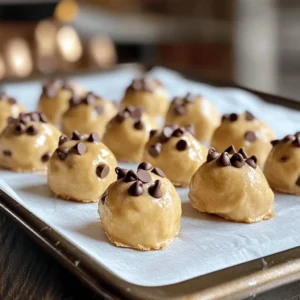
![- 2 cups mixed berries (strawberries, blueberries, raspberries) - 1 cup Greek yogurt (plain or vanilla) - 1 cup almond milk (or any milk of choice) - 2 tablespoons honey or maple syrup - 1 teaspoon vanilla extract - Fresh mint leaves for garnish (optional) What are the health benefits of berries? Berries are packed with vitamins, minerals, and antioxidants. They help fight disease and improve heart health. Eating mixed berries can boost your immune system too. Plus, they add natural sweetness to your popsicles. What are the advantages of Greek yogurt? Greek yogurt is rich in protein, which helps keep you full. It also contains probiotics that support gut health. Using Greek yogurt in your popsicles makes them creamy and adds a nice tang. What are the benefits of using almond milk? Almond milk is a low-calorie, dairy-free option. It has healthy fats and vitamin E, which is great for your skin. Using almond milk keeps these popsicles refreshing and light. Step 1: Blending the Ingredients First, gather your ingredients. Place the mixed berries, Greek yogurt, almond milk, honey, and vanilla extract into a blender. Blend on high speed until the mixture looks smooth and creamy. You can stop to scrape down the sides if needed. This step is key for a great texture. Step 2: Adjusting Sweetness Now, take a small taste of the smoothie mix. If it’s not sweet enough for you, add more honey or maple syrup. Blend again briefly to mix in the sweetness. You want it just right for your taste buds! Pouring the mixture into molds Once you achieve the desired taste, it’s time to fill the molds. Use a spoon to help pour the mixture into your popsicle molds. Make sure to leave a little gap at the top. The mixture will expand when it freezes. Inserting popsicle sticks After filling the molds, carefully insert popsicle sticks. Push them down gently until they are stable. This will help hold the popsicles together when they freeze. Recommended freezing time Now, place the molds in the freezer. Let them freeze for at least 4 to 6 hours. If you can wait longer, they will be even more solid. How to know when they're ready To check if the popsicles are ready, look for a firm and solid texture. You can run warm water over the outside of the molds. This will help release the popsicles easily. Gently pull on the sticks to remove them. Enjoy your delicious berry smoothie popsicles! To enjoy smooth popsicles, avoid ice crystals. First, blend the mixture well. This helps it stay creamy. If you notice ice crystals, try using fresh fruit instead of frozen. Fresh fruit blends easier and keeps the texture nice. For a creamier consistency, add more Greek yogurt. This makes the popsicles rich and thick. You can also use full-fat yogurt for an extra creamy treat. Another trick is to blend the mixture in smaller batches. This ensures each part gets fully mixed. If you want alternatives to honey or maple syrup, try agave or coconut sugar. Both options work great. You can also skip sweeteners if the berries are ripe. Taste the mix first, then add sweetness to your liking. For dietary needs, consider using stevia or monk fruit. These options are low in calories and still sweet. Adjust the amount based on your taste. Always remember, a little goes a long way. Garnishing can make popsicles look fancy. Try topping them with fresh mint leaves. This adds a pop of color and flavor. You can also sprinkle some crushed nuts for a crunchy touch. Pair these popsicles with yogurt or a fruit salad. They make a great snack or dessert. Serve them on hot days for a refreshing treat. Enjoying them with friends makes it even better! {{image_2}} You can change the fruit in your popsicles to keep things fresh. Try using seasonal fruits like peaches or cherries in the summer. They add a nice twist! In the fall, use apples or pears for a cozy flavor. For a tropical taste, mix in mangoes or pineapples. These fruits make your popsicles fun and exciting. You can also blend different berries together for a berry explosion in every bite. If you want a dairy-free treat, there are easy swaps. You can use coconut yogurt instead of Greek yogurt. It gives a rich and creamy texture. For milk, almond milk works great, but you can try oat or soy milk too. These options keep the popsicles creamy without dairy. They still taste amazing and are perfect for everyone. To make your popsicles extra special, consider adding flavors. Fresh mint or basil can bring a bright twist. Just a few leaves blended in can change everything! You can also sprinkle in a dash of cinnamon or nutmeg for warmth. If you like a sweeter taste, try agave syrup or stevia instead of honey. These changes can make your berry smoothie popsicles unique and delightful. For the full recipe, check out the detailed steps to make these delicious treats! You can store berry smoothie popsicles in the freezer for about three months. Use this time frame to enjoy their best taste and texture. For storing, I recommend using airtight containers or freezer-safe bags. This will help keep your popsicles fresh and tasty. To keep your popsicles fresh, wrap them in plastic wrap or aluminum foil. This extra layer stops air from getting in. It also helps prevent freezer burn, which can ruin their flavor and texture. If you notice ice crystals forming, it’s a sign of freezer burn. Enjoy your delicious popsicles within three months for the best experience! How do I get the popsicles out of the mold easily? To release the popsicles, run warm water over the outside of the molds for a few seconds. This warms up the sides and helps the popsicles slide out. Then gently pull on the sticks to free them. Can I use frozen berries instead of fresh? Yes, you can use frozen berries! They blend well and will still taste great. Just make sure to let them thaw a bit before blending for a smoother texture. How can I make the popsicles less sweet? To reduce sweetness, cut back on honey or maple syrup. You can also add more Greek yogurt or almond milk. This will balance the flavors without losing the yummy berry taste. What’s the best way to customize this recipe? You can mix different fruits like bananas or mangoes. Add spinach or kale for extra greens. Try using flavored yogurt or different milk types to change the taste. Get creative and find what you love! Can I use this recipe for a larger batch? Absolutely! Just double the ingredients if you want more popsicles. Make sure you have enough molds to hold the extra mixture. Following the [Full Recipe] will ensure you get the right blend every time. These berry smoothie popsicles offer a tasty and healthy treat. We explored the key ingredients, like mixed berries and Greek yogurt, which provide great nutrition. You learned step-by-step how to blend, freeze, and store these popsicles perfectly. Consider trying variations with different fruits or sweetening options to customize to your taste. With some simple tips, you can make these popsicles creamy and delicious. Enjoy your refreshing treats and share them with others for smiles all around.](https://mysavedrecipe.com/wp-content/uploads/2025/05/b727168a-348a-44c3-a1da-894187ecb43b-300x300.webp)

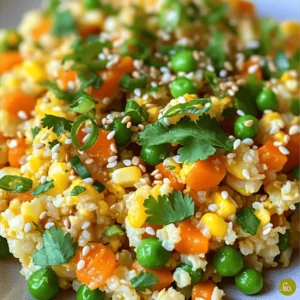

![To make this refreshing Mango Salsa with Avocado, you need fresh, simple ingredients. Each one plays a role in creating the perfect balance of flavor. Here’s what you’ll need: - Ripe mango - Ripe avocado - Red onion - Red bell pepper - Jalapeño pepper - Fresh cilantro - Lime juice - Olive oil - Salt and pepper Using ripe mango and avocado is key. Their sweetness and creaminess make the salsa shine. The red onion and red bell pepper add crunch and color. The jalapeño gives a nice kick, but you can adjust it to your taste. Fresh cilantro brings brightness, while lime juice and olive oil add zest and richness. Finally, salt and pepper enhance all the flavors. For the full recipe, click [Full Recipe]. Now, let’s gather these ingredients and get ready to make a fresh, vibrant salsa! To make delicious mango salsa with avocado, follow these simple steps. - Dice mango and avocado: Start by peeling the mango. Cut it into small pieces. Then, take the avocado and cut it the same way. This gives nice bites in the salsa. - Chop red onion and red bell pepper: Next, take a small red onion. Chop it finely. Then, dice the red bell pepper. Make sure to keep the pieces small for even flavor. - Mince jalapeño pepper: If you like some heat, grab a jalapeño. Remove the seeds and chop it very finely. This will add a nice kick to your salsa. - Combine ingredients in a bowl: Now, take a medium bowl. Add the diced mango, avocado, chopped onion, diced bell pepper, and minced jalapeño. Gently mix them together. Be careful not to mash the avocado. - Mix lime juice and olive oil: In a small bowl, squeeze the juice from two limes. Add one tablespoon of olive oil. Whisk them together until well blended. Once you finish these steps, pour the lime and oil mix over the salsa. Add salt and pepper to taste. Toss it all gently for the best flavor. Let it sit for 15 minutes before serving. This is important because it lets the flavors come together beautifully. For the full recipe, check out the details above. Choosing ripe mango and avocado is key for great flavor. A ripe mango should feel slightly soft when you gently press it. Look for a bright color, too. For avocados, check for a dark skin. It should yield a bit when pressed. If they're hard, give them a few days to ripen. Chopping is an art. Use a sharp knife for smooth cuts. Start by slicing the mango and avocado in half. Remove the pit safely. Then, dice them into small cubes. For onion and bell pepper, chop them finely. This helps blend the flavors nicely. Allowing flavors to meld makes a big difference. After mixing all your ingredients, let your salsa sit for at least 15 minutes. This resting time allows the lime juice to soak in. The taste will be more vibrant and refreshing! For the full recipe, check out the details above. Enjoy your fresh and flavorful salsa! {{image_2}} Mango salsa with avocado is already a hit, but you can make it even better! Here are some fun ideas to mix things up. - Adding pineapple for sweetness: Pineapple adds a nice touch. It makes the salsa sweeter and more tropical. Just chop some ripe pineapple and mix it in. The sweetness of pineapple balances the heat from the jalapeño. - Incorporating black beans for protein: Want to make your salsa heartier? Add black beans! They bring protein and fiber. Rinse a can of black beans and stir them in. This twist makes the salsa filling and great for a meal. - Using different herbs like mint or basil: Want a fresh taste? Try using mint or basil instead of cilantro. Both herbs add unique flavors. Mint gives a cool touch, while basil adds a sweet note. Just chop your chosen herb and mix it in for a new twist. Feel free to try these variations and find your favorite! For the full recipe, check out the delicious Mango & Avocado Fiesta Salsa. To keep your salsa fresh, store it in a tight container. It’s best to refrigerate it right after making it. This keeps all the flavors bright and tasty. - Best practices for refrigerating: Place your mango salsa in an airtight container. This helps prevent air from getting in. The salsa will stay fresh for about 3 days in the fridge. After that, the ingredients may lose their crunch. - Freezing mango salsa: You can freeze your salsa if you want to keep it longer. Use a freezer-safe container and leave some space at the top. Salsa expands when it freezes. It stays good for up to 3 months. When you're ready to eat it, let it thaw in the fridge overnight. - Shelf life of ingredients: Each ingredient has a different shelf life. Fresh mango and avocado are best eaten quickly. They can spoil fast. Red onion and bell pepper last longer. They can stay fresh for about a week in the fridge. Keep an eye on them to enjoy the best taste. For a full recipe, check out the [Full Recipe]. Mango Salsa with Avocado can be mild or spicy. The heat comes from the jalapeño pepper. If you want less heat, remove the seeds and ribs from the jalapeño. For more spice, add more jalapeño or use a hotter pepper. This salsa is fresh and bright, not overpowering. Yes, you can make this salsa ahead of time. However, I recommend making it no more than a few hours before serving. The avocado can brown if left too long. To slow browning, squeeze extra lime juice over the avocado. This helps keep the color bright and fresh. Mango Salsa pairs well with many foods. Serve it with tortilla chips for a tasty snack. It also goes great on fish or chicken for a flavorful meal. Try it on tacos or salads for extra zing. You can even add it to sandwiches for a fresh twist. For the full recipe, check out the details above! In this blog post, we explored how to make delicious mango salsa with avocado. We went over the key ingredients, preparation steps, and helpful tips. You can add creative twists, like pineapple or black beans, to make it your own. Storing your salsa properly keeps it fresh longer. Remember, this tasty dish is easy to prepare and perfect for any occasion. Try it out and enjoy the bright flavors! You won’t be disappointed.](https://mysavedrecipe.com/wp-content/uploads/2025/05/6d9221c3-7ebd-48b1-9e19-afc94c25e611-300x300.webp)
![- Cauliflower florets - Cheddar cheese (shredded) - Parmesan cheese (grated) - Cream cheese - Sour cream - Garlic (minced) - Onion powder - Smoked paprika - Salt and pepper The star of this dish is the cauliflower. It gives a light and fluffy texture. The cheese adds the creamy and cheesy taste. Both cheddar and Parmesan cheese work great together. Cream cheese and sour cream make the dish rich and smooth. The seasonings are key. Garlic adds a punch of flavor. Onion powder gives depth, while smoked paprika adds a hint of smokiness. Salt and pepper balance everything out. - Breadcrumbs for topping - Fresh chives for garnish - Other cheese varieties or vegetables You can add breadcrumbs for a crunchy topping. This gives a nice texture contrast. Fresh chives make the dish look bright and fresh. You can also swap in other cheese types. Mozzarella or gouda can bring a new twist. Adding veggies, like spinach or broccoli, can boost nutrition. For the full recipe, check the section above. - First, preheat your oven to 375°F (190°C). This heat will help the dish cook evenly. - While the oven heats, cut your large head of cauliflower into florets. You want them to be bite-sized. - Bring a large pot of salted water to a boil. Add the cauliflower florets and cook for about 5-7 minutes. This step makes the cauliflower tender but not mushy. Drain the florets and set them aside. - In a mixing bowl, combine the cream cheese, sour cream, 3/4 cup of the shredded cheddar cheese, and grated Parmesan cheese. Add minced garlic, onion powder, smoked paprika, and salt and pepper. Mix until smooth and creamy. - Gently fold the drained cauliflower into the cheese mixture. Make sure the cauliflower is well-coated. This ensures every bite is cheesy. - Next, transfer the cheesy cauliflower mixture into a greased baking dish. Spread it evenly so it cooks nicely. - If you like a crunchy topping, sprinkle breadcrumbs over the top. If not, add the remaining shredded cheddar cheese for extra gooeyness. - Now, place the dish in the preheated oven. Bake for 20-25 minutes, or until the cheese is bubbly and slightly golden. You want to see that nice golden brown on top. - Once done, take the dish out of the oven and let it cool for a few minutes. This helps the cheese set. - Before serving, garnish with fresh chives for a pop of color and flavor. They add a nice touch to the dish. For the complete recipe, you can refer to the [Full Recipe]. To cook cauliflower perfectly, start with fresh florets. Cut them into even pieces for uniform cooking. Boil salted water in a large pot. Add the florets and cook for 5-7 minutes. You want them tender but still firm. Drain them well to avoid a watery bake. For a smooth texture, mix the cheeses in a bowl first. Use a fork or spatula to blend them well. This ensures the blend is creamy and easy to coat the cauliflower. When you add the cooked florets, fold gently to keep their shape. There are many ways to serve cheesy cauliflower bake. It pairs great with grilled chicken or fish. You can also enjoy it as a side with steak or pork. For a fun presentation, try using individual ramekins. This makes each serving feel special. You can also serve it in the baking dish. Just sprinkle fresh chives on top for a pop of color. If you want a lower-calorie dish, consider using reduced-fat cream cheese. You can also swap sour cream for Greek yogurt. This keeps the creaminess while cutting calories. For dietary restrictions, use dairy-free cheese alternatives. There are many available now that melt well. You can also add other veggies, like spinach or mushrooms, to boost nutrition. {{image_2}} You can spice up your cheesy cauliflower bake by adding jalapeños. Just chop them finely and mix them in. This gives a nice kick to the dish. If you prefer fresh tastes, try adding herbs like thyme or rosemary. They add a bright flavor that pairs well with the cheese. Feel free to swap cheeses based on what you have. Mozzarella gives a stretchy texture, while gouda adds a smoky flavor. You can also pump up the nutrition by adding vegetables. Broccoli and spinach mix well and bring more color to the bake. If you want to make this dish faster, try the Instant Pot. Just cook the cauliflower on high for 3-5 minutes. You can also use the stovetop with a large pot. For outdoor cooking, grilling adds a unique flavor. Just wrap the mixture in foil and grill it for about 20-25 minutes. This method gives a nice char and smoky taste. To keep your cheesy cauliflower bake fresh, put it in an airtight container. This helps keep moisture in and air out. Make sure to cool the dish first. If you want to freeze it, let it cool completely. Then, wrap it tightly in plastic wrap. Place it in a freezer-safe bag or container. This way, the bake can last for a long time. When you are ready to eat the leftovers, you can reheat them in several ways. The best method is to use an oven. Preheat the oven to 350°F (175°C). Then, place the cheesy bake in an oven-safe dish. Cover it with foil to keep it moist and heat for about 20 minutes. You can also use a microwave. Just put it in a microwave-safe dish, cover it, and heat in short bursts. This keeps the texture nice. To maintain flavor, add a pinch of salt or fresh herbs when reheating. In the fridge, your cheesy cauliflower bake stays good for about 3 to 5 days. If you freeze it, it can last for 2 to 3 months. However, always watch for signs of spoilage. If you see mold or it smells strange, it's best to throw it away. Checking your leftovers often can help you enjoy them at their best! The best way to cook cauliflower is by boiling it. Start by bringing a pot of salted water to a boil. Add the cauliflower florets and cook for 5-7 minutes. You want the cauliflower to be tender but still firm. Drain it well before mixing it with the cheese. This method keeps the cauliflower bright and flavorful. Yes, you can make cheesy cauliflower bake ahead of time. Prepare the dish up to the baking step. Cover it tightly with plastic wrap or foil and store it in the fridge. When ready to bake, remove the cover and bake it directly from the fridge. This dish can save time on busy days. To make this dish gluten-free, skip the breadcrumbs on top. You can still achieve a crunchy texture by using gluten-free breadcrumbs or simply leave it off. The cheesy cauliflower will still be rich and tasty without them. It’s perfect for anyone who needs to avoid gluten. Yes, you can use frozen cauliflower instead of fresh. Just make sure to thaw it and drain any excess water. You may need to adjust the cooking time slightly since frozen cauliflower is often pre-cooked. This substitution can save time and still taste great. Cheesy cauliflower bake goes well with many side dishes. Here are some ideas: - Grilled chicken or fish for protein. - A fresh garden salad for crunch. - Roasted vegetables for added flavor. - Quinoa or rice for a hearty meal. These options complement the rich flavors of the bake and create a balanced plate. Cheesy cauliflower bake is a simple, tasty dish. We covered the key ingredients, like cauliflower and cheeses. I shared clear steps for preparation, cooking, and baking. You also learned helpful tips for serving and storing leftovers. Consider trying different flavors and methods for a fun twist. With these ideas, you can easily customize this dish to fit your taste. Enjoy cooking and let your creativity shine in the kitchen!](https://mysavedrecipe.com/wp-content/uploads/2025/05/024d4383-2a35-4b86-90af-2a37e8d8e758-300x300.webp)
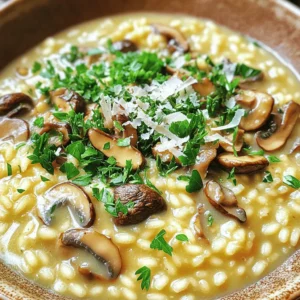
![- 1 can (15 oz) chickpeas, drained and rinsed - 2 tablespoons olive oil - 1 tablespoon honey or maple syrup - 1 teaspoon smoked paprika - 1/2 teaspoon cayenne pepper (adjust to taste) - 1 teaspoon garlic powder - 1/2 teaspoon ground cumin - Salt and pepper to taste - Additional spices for customization (e.g., chili powder, turmeric) - Fresh herbs for garnish (e.g., parsley or cilantro) - Nutritional yeast for a cheesy flavor Sweet and spicy roasted chickpeas are fun to make and eat. You will need a few simple ingredients. First, grab a can of chickpeas. Drain and rinse them well to remove any residue. This step is key for achieving a crispy texture. Next, you will need olive oil to help the spices stick. Honey or maple syrup adds a touch of sweetness. Smoked paprika gives a rich flavor, while cayenne pepper adds heat. Adjust the amount of cayenne to fit your taste. Garlic powder and ground cumin round out the flavor profile. Don’t forget salt and pepper! You can tweak these amounts based on what you like. For extra creativity, think about adding optional spices. Chili powder or turmeric can change the flavor completely. Fresh herbs can also add a nice touch. Some people enjoy a sprinkle of nutritional yeast for a cheesy twist. This is a great recipe to share with friends and family. The full recipe is easy to follow, and everyone can enjoy the delicious crunch of these roasted chickpeas! - Preheat oven to 400°F (200°C). - Pat chickpeas dry with a kitchen towel. This helps them get nice and crispy. - Combine spices and oil in a bowl. - Mix until fully incorporated. You want each chickpea to be well-coated. - Toss chickpeas in the spice mixture. Make sure they are evenly covered. - Spread evenly on a baking sheet. This allows them to roast well. - Roast for 25-30 minutes, stirring halfway. Watch them turn golden brown and crunchy. Follow the Full Recipe for exact measurements and tips. Enjoy the process and the tasty results! To get the best crunch, start by making sure your chickpeas are fully dried. After rinsing, spread them on a clean towel and pat them dry. This step is key to getting that desirable crunch. Also, avoid overcrowding the baking sheet. Give those chickpeas space to breathe. If they are too close together, they will steam instead of roast, leading to a soggy snack. You can customize the spice levels to match your taste. If you love heat, add more cayenne pepper. For a milder flavor, cut back on it. You can also experiment with different sweeteners, such as agave syrup. This allows you to find the perfect balance between sweet and spicy for your palate. Pair your roasted chickpeas with dips like tzatziki or hummus. The coolness of the dip complements the heat of the chickpeas nicely. You can also serve them as a salad topping for a crunchy texture. They make a great snack on their own, too. Enjoy them any way you like! For the full recipe, check out the details above. {{image_2}} You can play with flavors for your roasted chickpeas. Here are two fun ideas: - Sweet Cinnamon Variation: Mix some cinnamon and sugar into your spice mix. This brings a warm and sweet twist to the dish. It’s like dessert in a crunchy form! - Savory Herb Variation: Instead of the sweet mix, go for Italian seasoning or fresh rosemary. This gives a nice herbal taste that pairs well with the chickpeas. You can easily adjust this recipe to fit different diets: - Vegan modifications: Use maple syrup instead of honey. This keeps it sweet and vegan-friendly. - Gluten-free options: This recipe is already gluten-free, so it’s perfect for anyone avoiding gluten. These roasted chickpeas make great additions to many meals: - Using as a protein boost in grain bowls: Toss these crunchy chickpeas into your grain bowls. They add protein and crunch. - Snacking option for movie nights: Serve them as a fun snack while watching a movie. They are healthier than chips and just as tasty! For the full recipe, check out the Sweet and Spicy Roasted Chickpeas section. To keep your sweet and spicy roasted chickpeas fresh, store them in an airtight container. This helps maintain their crunch. They are best consumed within 3-5 days. After this time, they may lose their crispiness and flavor. If you want to enjoy them again, you can reheat chickpeas. Place them in the oven for a few minutes. This helps them regain their crunch. Avoid using the microwave. It may make them soggy, and that's not fun. You can freeze chickpeas before roasting for later use. Make sure to package them properly to prevent freezer burn. Use freezer bags or containers. When you’re ready to eat, just thaw and roast according to the [Full Recipe]. This way, you can enjoy a tasty snack anytime! Sweet and spicy roasted chickpeas can last about 3 to 5 days when stored properly. To keep them fresh, place them in an airtight container at room temperature. They may lose some crunch over time, but they will still taste great. Yes, you can make these chickpeas in advance! Prepare them ahead of time and store them in an airtight container. If you want to enjoy them fresh, roast them just before serving. This way, you keep that delightful crunch. There are many fun ways to serve these chickpeas! Here are some ideas: - Pair them with tzatziki or hummus for a tasty dip. - Sprinkle them on top of salads for added crunch. - Mix them into grain bowls for extra protein. - Enjoy them as a stand-alone snack while watching a movie. The options are endless! For the full recipe, check out the Sweet and Spicy Roasted Chickpeas section. Sweet and spicy roasted chickpeas are simple to make and very tasty. You learned about the main ingredients, how to prepare and roast them, and tips for the best results. Experiment with flavors and serving ideas to enjoy these chickpeas in various ways. They are great for snacking or as meal toppings. Store leftovers well and reheat correctly for a crispy treat. Enjoy making your own versions, and remember, the fun is in the cooking!](https://mysavedrecipe.com/wp-content/uploads/2025/05/0e0625a0-87db-4583-a994-3c38749dc45b-300x300.webp)
![To make crispy veggie spring rolls, you need these main ingredients: - 1 cup cabbage, finely shredded - 1 carrot, julienned - 1 bell pepper (any color), sliced thin - 1 cup bean sprouts - 1 green onion, chopped - 2 cloves garlic, minced - 1 teaspoon ginger, grated - 2 tablespoons soy sauce - 1 teaspoon sesame oil - 20 spring roll wrappers - Oil for frying - Salt and pepper to taste These ingredients create a balanced mix of flavors and textures. The crunchy veggies add freshness, while garlic and ginger bring warmth. You can adjust the soy sauce for more or less saltiness, depending on your taste. Garnishes can elevate your spring rolls. Here are some options: - Sesame seeds for crunch - Fresh cilantro for color - Lime wedges for a zesty kick - Sweet chili sauce for dipping These garnishes add extra flavor and make your dish look beautiful. You can mix and match them based on what you like. If you need gluten-free options, look for rice paper wrappers instead of traditional spring roll wrappers. For vegan substitutes, ensure your soy sauce is labeled vegan. You can also swap out the sesame oil for a different oil, like canola or vegetable oil. These simple changes keep your spring rolls tasty and suitable for everyone! Remember, cooking should be fun and easy, so feel free to adapt the ingredients to suit your needs. For the full recipe, check out the details above. Start by getting your veggies ready. In a big bowl, mix these ingredients: - 1 cup cabbage, finely shredded - 1 carrot, julienned - 1 bell pepper, sliced thin - 1 cup bean sprouts - 1 green onion, chopped This mix gives a nice crunch and flavor. Heat a skillet over medium heat. Add a splash of oil. When the oil is hot, throw in: - 2 cloves garlic, minced - 1 teaspoon ginger, grated Sauté for about 1 minute. The smell will be amazing! Now add your mixed veggies to the skillet. Stir-fry for 3-4 minutes. You want them to soften but still stay crunchy. Drizzle in: - 2 tablespoons soy sauce - 1 teaspoon sesame oil Mix well and season with salt and pepper. Take the skillet off the heat and let the filling cool a bit. Now, it’s time to fill the spring rolls. Grab a spring roll wrapper. Place it on a clean, dry surface. Make sure one corner points towards you. Add about 2-3 tablespoons of the veggie mix near that corner. Fold the bottom corner over the filling. Then, fold in the sides. Roll tightly away from you. Use a little water to seal the top edge. Repeat this with the rest of the wrappers and filling. Heat oil in a deep frying pan to 350°F (175°C). Carefully add the spring rolls in batches. Fry them for about 4-5 minutes. They should turn golden brown and crispy. Turn them occasionally for even cooking. When done, use a slotted spoon to take them out. Place the spring rolls on paper towels to drain extra oil. Enjoy your crispy veggie spring rolls! For the full recipe, check out the details above. To get your spring rolls perfectly crispy, follow these steps. First, ensure your oil is hot enough. Heat it to 350°F (175°C) before frying. If the oil isn’t hot, the rolls will soak up too much oil and become soggy. Fry them in small batches. This helps maintain the oil temperature and gives each roll enough room to cook evenly. Finally, let them rest on paper towels to absorb excess oil, keeping that delightful crunch. Watch out for a few common mistakes. Don't overfill your spring rolls. This can make them hard to seal and fry. Also, avoid using wet or soggy vegetables. Excess moisture can lead to a mushy texture. Make sure to cool the filling before wrapping. If you skip this step, the heat can steam the wrappers and ruin the crispiness. Serve your crispy veggie spring rolls hot. Pair them with sweet chili sauce or soy sauce for a tasty dip. You can also add a sprinkle of sesame seeds and fresh cilantro for a pop of color and flavor. For a fun twist, try serving them with a side of peanut sauce or a zesty lime wedge. Enjoy these delightful bites at parties or as a snack! For the full recipe, check out the Full Recipe section. {{image_2}} You can change the filling to add your favorite veggies. Try spinach, mushrooms, or zucchini. You can also add cooked tofu or tempeh for protein. If you like heat, add some sliced jalapeños or chili peppers. Mixing in fresh herbs like cilantro or mint can brighten the flavors too. To make your spring rolls pop, try adding fun flavors. For a hint of sweetness, mix in some shredded coconut or a bit of brown sugar. You can use different sauces as well, like hoisin sauce or chili garlic sauce. A splash of lime juice adds a nice zing and balances the flavors. You can serve spring rolls in many fun ways. Try cutting them into bite-sized pieces for easy sharing. You can also stack them on a plate and drizzle sauce on top for a beautiful look. For a fun twist, serve them in lettuce leaves instead of wrappers. This adds crunch and freshness to each bite. You can find the full recipe [here]. If you have leftover spring rolls, store them in an airtight container. Place parchment paper between layers to keep them crispy. They stay fresh in the fridge for up to three days. Make sure to cool them completely before storing. This prevents sogginess. To reheat, avoid the microwave. It makes them soft. Instead, use a skillet or oven. Heat a small amount of oil in a skillet over medium heat. Add the spring rolls and cook for 2-3 minutes on each side. For the oven, preheat to 375°F (190°C). Place spring rolls on a baking sheet for 10-15 minutes until hot and crispy. You can freeze prepped spring rolls before frying. Lay them in a single layer on a baking sheet. Once they are frozen, transfer them to a freezer bag. They can last for up to three months. When ready to eat, fry them straight from the freezer. Just add an extra minute or two to the frying time for the best results. For the full recipe, check the previous section. The best way to seal spring rolls is to use water. After you fill the wrapper, fold it securely. Use a little water on the edge to stick it closed. This helps keep the filling inside while frying. Make sure to roll tightly but not too tight, or the wrapper may burst. Yes, you can bake crispy veggie spring rolls. Preheat your oven to 425°F (220°C). Place the spring rolls on a baking sheet lined with parchment paper. Brush them lightly with oil for a crispier texture. Bake for about 20-25 minutes, turning halfway through. They will be less oily but still delicious. You can store homemade spring rolls in the fridge for up to 3 days. Keep them in an airtight container to maintain freshness. If you want to store them longer, freeze un-fried rolls for up to a month. Just remember to separate them with parchment paper to prevent sticking. Spring rolls taste great with several dipping sauces. Popular choices include sweet chili sauce, soy sauce, or peanut sauce. You can also try a mix of soy sauce and vinegar for a tangy kick. For a fresh twist, pair with a zesty lime dipping sauce. Yes, spring rolls have a rich history in Asian cuisine. They originated in China over a thousand years ago, during the Spring Festival. People filled thin wrappers with fresh vegetables to celebrate the new season. Today, spring rolls are popular in many Asian countries, each with unique twists and fillings. In this article, we covered the key ingredients for spring rolls, from main components to optional garnishes and substitutes. We outlined easy step-by-step instructions for making delicious rolls and shared tips for achieving crispiness while avoiding common mistakes. We even explored tasty variations and provided storage info to keep your rolls fresh. With these skills and knowledge, you can enjoy making spring rolls at home. Dive in, be creative, and savor your tasty results!](https://mysavedrecipe.com/wp-content/uploads/2025/05/f537a930-0d1c-42f4-9a4a-394058e0644f-300x300.webp)
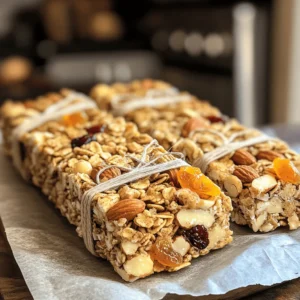
![- 1 (8 oz) package cream cheese, softened - 1/2 cup powdered sugar - 1/4 cup brown sugar - 1 teaspoon vanilla extract - 1/2 cup caramel sauce - 1/2 teaspoon cinnamon - 2-3 apples (such as Granny Smith or Honeycrisp) - Chopped nuts (for garnish) You can change up this recipe with fun extras. Try adding mini chocolate chips for a sweet touch. You can also use different nuts, like almonds or pecans. If you want a twist, add a splash of maple syrup for flavor. For sweeteners, feel free to swap the sugars with alternatives like honey or agave syrup. You can also use a sugar-free caramel sauce if preferred. These options can make the dip fit your taste or dietary needs. Enjoy creating your perfect caramel apple dip! For the full recipe, check out the detailed instructions. Start by grabbing your mixing bowl. Take the softened cream cheese and beat it well. Use an electric mixer for this step. You want it to become smooth and creamy. This is the base of your dip. Next, add in the powdered sugar, brown sugar, and vanilla extract. Mix everything together until it’s fluffy. This sweet mixture will make the dip rich and tasty. Now, it’s time to layer. Take your creamy mix and spread it evenly into a serving dish. This will be the first layer people see. It should look nice and inviting. Now comes the fun part! Drizzle the caramel sauce over your cream cheese layer. Make sure to cover it well. This adds a sweet touch that everyone loves. Then, sprinkle cinnamon over the caramel. This will give it a warm flavor. If you like nuts, add chopped nuts on top. They add a great crunch! After adding the toppings, it’s time to chill. Place the dip in the refrigerator for about 30 minutes. This step is key because it lets the flavors mix. Chilling makes it taste even better! After it’s chilled, serve it with sliced apples. The fresh apples make a great pair with the dip. Enjoy your delicious Caramel Apple Dip with Cream Cheese! To get the best dip, use softened cream cheese. Softened cream cheese blends well and gives a smooth texture. Cold cream cheese can make your dip lumpy. Leave it out for about 30 minutes before mixing. When you beat the cream cheese, use a hand mixer or a stand mixer. Mix at medium speed for about two minutes. This helps to make the dip fluffy and light. You can add fun mix-ins to your dip. Try adding mini chocolate chips for a sweet twist. Chopped nuts also add crunch and flavor. If you like spice, add a pinch of nutmeg or ginger. Adjust the sweetness by adding more or less brown sugar. Taste as you go to find your perfect balance. The right apples can make your dip shine. I recommend Granny Smith apples for their tartness. Honeycrisp apples are sweet and crunchy, too. Slice your apples just before serving to keep them fresh. For a fun serving idea, use a cute bowl for the dip and place the apple slices around it. You can even add a few caramel candies on top for decoration. {{image_2}} You can mix up the flavors of your caramel apple dip. One tasty option is to add chocolate. You can swirl in some melted chocolate or sprinkle chocolate chips on top. The rich taste of chocolate pairs well with the sweetness of caramel. You can also add nuts or fruits to your dip. Chopped pecans or walnuts give a nice crunch. For a fruity twist, try adding dried cranberries or raisins. These add color and a bit of tang. Each bite can surprise you with new flavors. Seasonal changes can inspire new dips. For the holidays, you might want to sprinkle festive spices like nutmeg or ginger. A layer of crushed candy canes on top can make it even more special. You can also use seasonal fruits in your dip. In fall, crisp apples work great. In summer, try fresh peaches or strawberries. Each season brings a new chance to explore flavors. You can make this dip fit different diets easily. For a gluten-free option, just check that your caramel sauce is gluten-free. Many brands offer sauces that fit this need. If you want a vegan dip, you can swap cream cheese for a plant-based version. Use coconut or almond cream and vegan caramel sauce. This way, everyone can enjoy this tasty treat. For the full recipe, check out the [Full Recipe]. To keep your leftover dip fresh, store it in an airtight container. This will help prevent it from absorbing other smells in your fridge. If you want to keep it safe, use glass or plastic containers with tight-fitting lids. These containers keep moisture in and air out. The dip lasts about 3 to 5 days in the fridge. Make sure to check for any changes in smell or texture before eating it. If it looks or smells off, it’s best to throw it away. Yes, you can freeze the dip! To freeze it, place it in a freezer-safe container. Leave some space at the top for expansion. To thaw the dip, place it in the fridge overnight. This keeps the texture smooth. Before serving again, stir it gently to mix any separated ingredients. For the full recipe, check the link provided. Enjoy your caramel apple dip! Can I use low-fat cream cheese? Yes, you can use low-fat cream cheese. It will still taste good. Just remember, it may be a bit less creamy. How can I make caramel sauce from scratch? Making caramel sauce is simple! You need sugar, butter, and cream. Cook sugar until it melts and turns golden. Stir in butter, then add cream slowly. Cook until smooth. What kind of fruits can I dip? You can dip many fruits! Try apples, pears, bananas, or strawberries. These fruits pair well with the sweet dip. Why is my dip too runny? Your dip may be too runny if the cream cheese is not firm enough. Make sure to use softened cream cheese, not melted. What to do if the flavors are too strong? If the flavors are too strong, add more cream cheese. Mix it in to balance the taste. For the complete recipe details, check out the [Full Recipe](#). This blog post covered a tasty cream cheese dip recipe. You learned about the main ingredients, optional add-ins, and step-by-step instructions. I also shared tips for the best texture and flavor. You can even find variations and storage info. Creating this dip can be fun and easy. It’s a perfect treat for sharing. You can customize it to fit any occasion or flavor you like. Enjoy your dip and happy cooking!](https://mysavedrecipe.com/wp-content/uploads/2025/05/e104724d-97fd-4d7b-9a5a-be11c636641e-300x300.webp)
